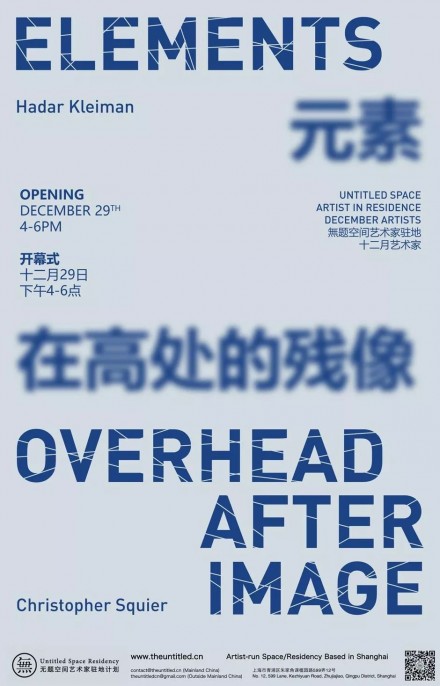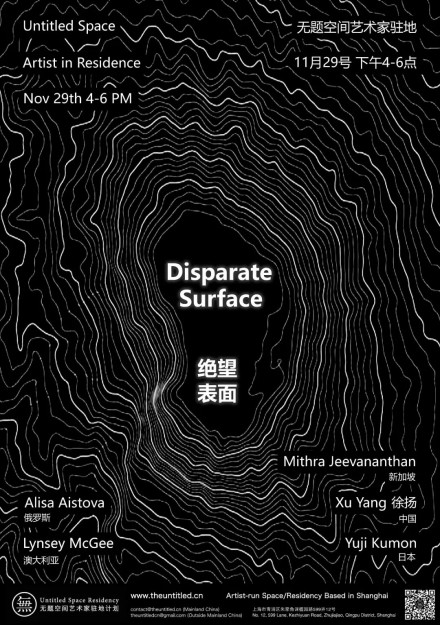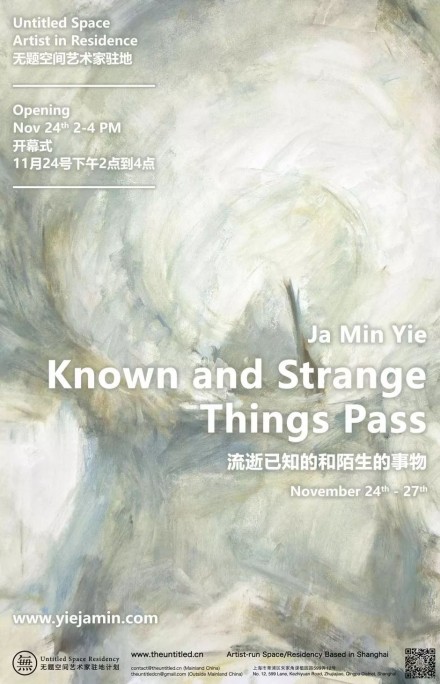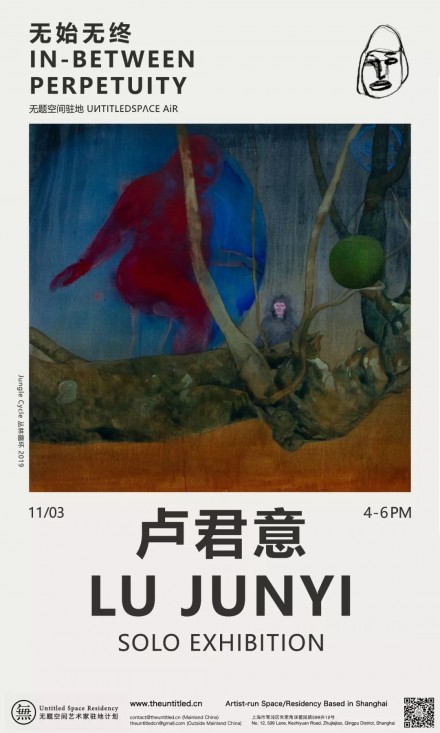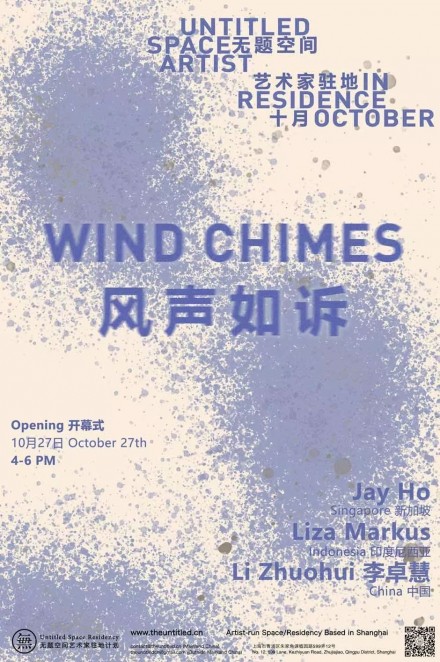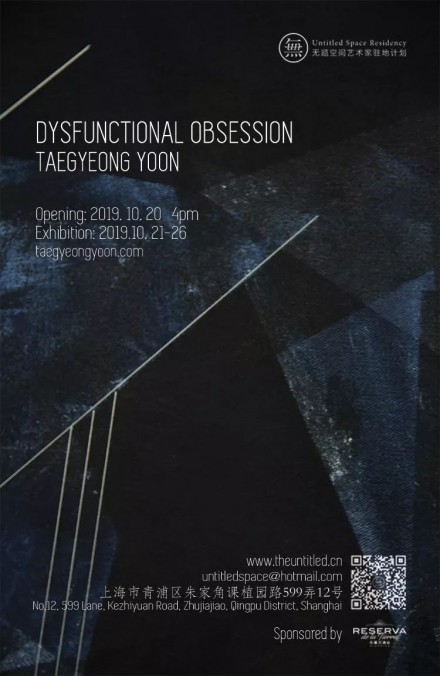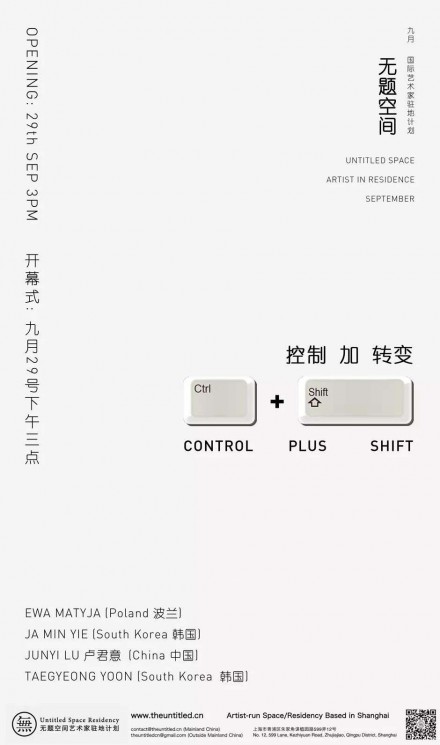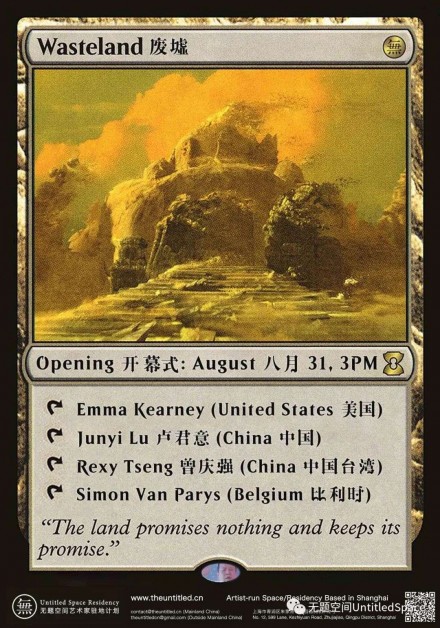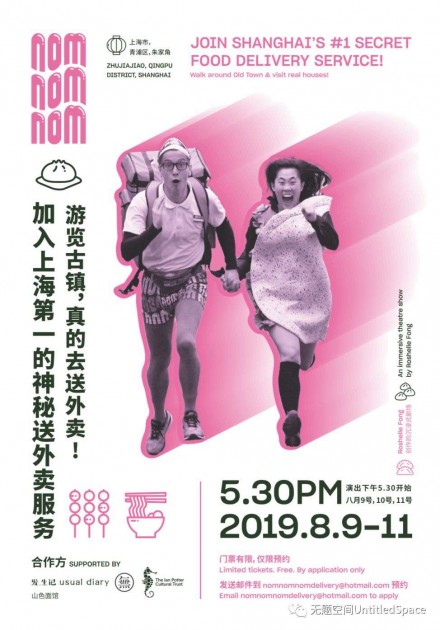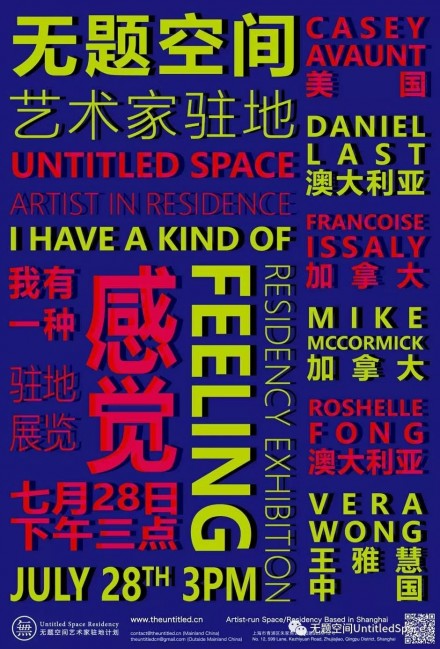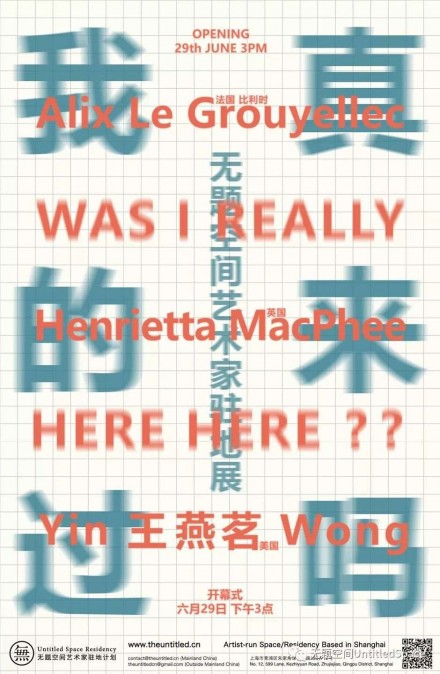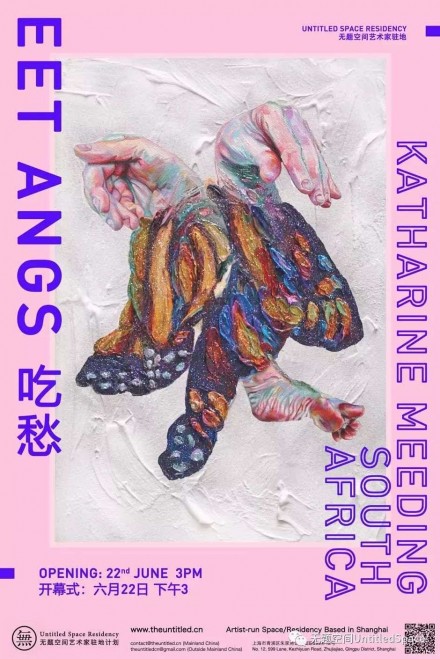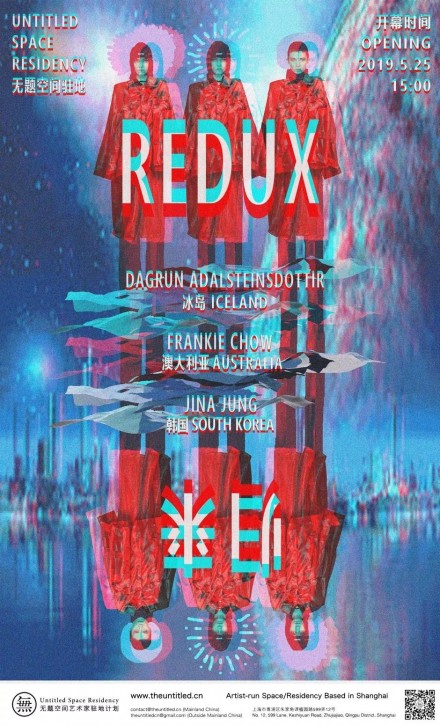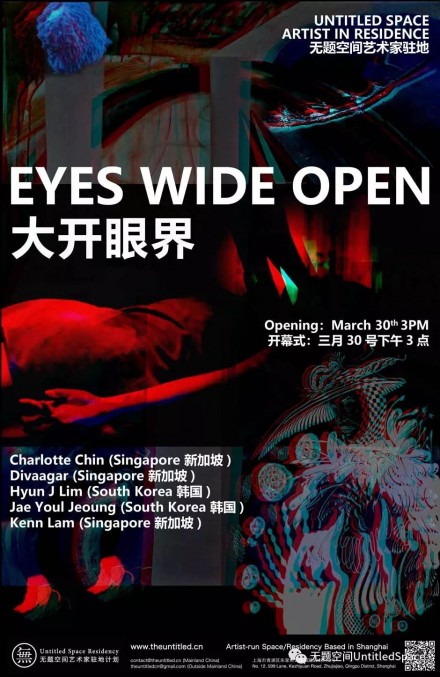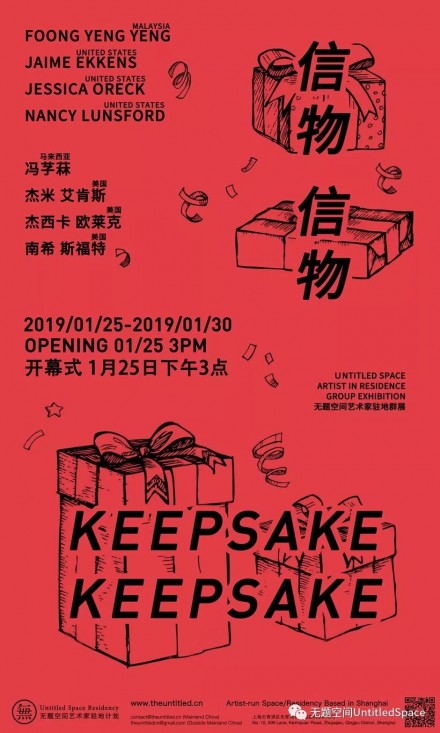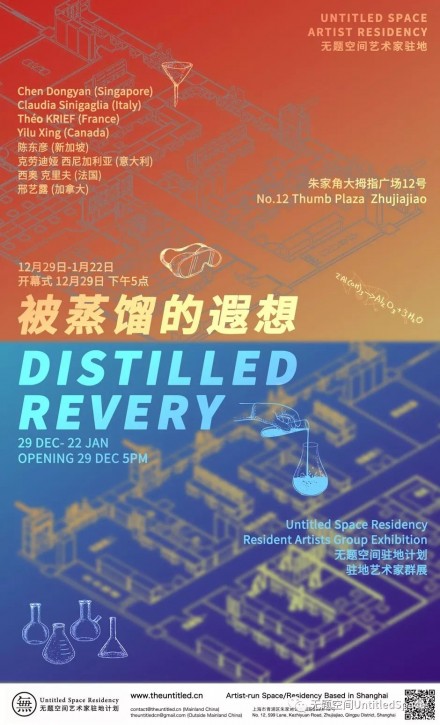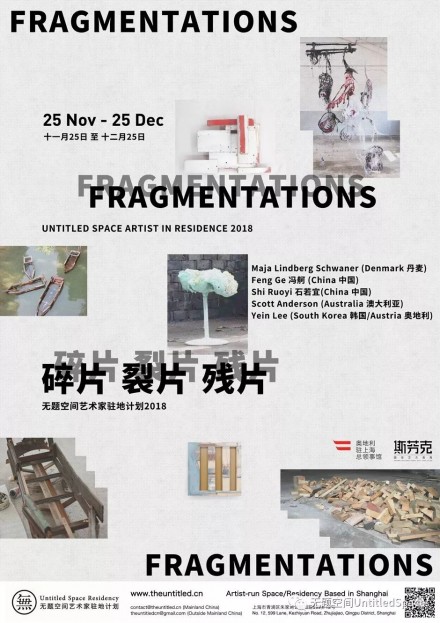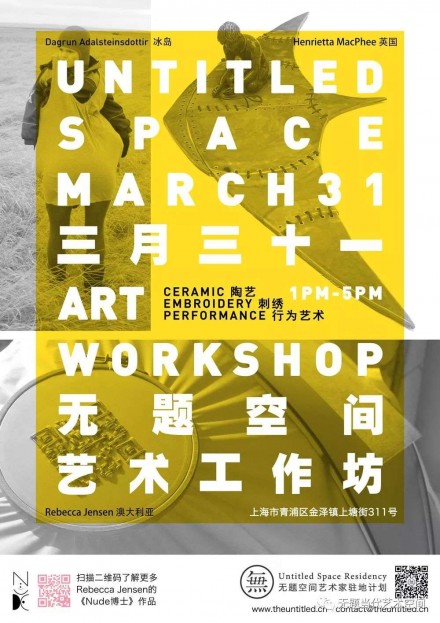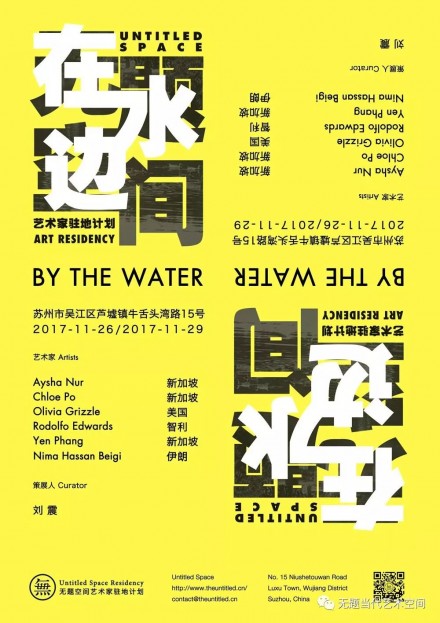2025 October Artists in Residence
Residency Works Open Day
October 11 (Saturday) 16:00, 2025
在柳树、阴影与表面之间
在青浦区的一座水乡古镇里,巴西艺术家Vicente Saldanha的足迹并不遵循预设计划:它们在敏锐聆听中被塑造。对这位驻地艺术家而言,行走是小心失落的一种方式。正是他允许自己被小巷、运河、桥梁与树影引导,他的身体 – 以及由此而来的绘画 – 才被世界滋养。这并非绘制城市地图,而是完整地穿越它,留心那一切颤动、脉搏、低语。景观以其情感的丰厚,不是被远远观察的:它被吸收。城市不仅是一幅要被描画的图像,更是一种要被感受的质地。
他于八月一日抵达那里。像是对一场旅程的开篇,也像是揭示了某种所关乎的事物,艺术家的文字已显露出他欲通过那些能影响他的事物来居住在时间中的意图。从机场到地铁线路的穿行被描写为场景的蒙太奇 – 一个景观飞速闪过的电影序列,由栅格般的框架与现代住屋的重复节奏所推进。他对这些转换的迷恋,对引导他感知光线的颂歌,是如此强烈,以至于这些元素在他对城市的影像记录与视听叙述中不断重现。
标记他体验的光之转换 – 被地铁广播与城市霓虹灯所节奏化 – 唯一打断这一切的,是垂柳。那些沿水岸高高长枝的树穿过他的视觉构图。它们的存在在艺术家的身体里回响,后来又以绿色的污迹出现于画布之上。那是运动与水性的持久记忆向绘画的转移。
法国历史学家Michel de Certeau在20世纪下半叶致力于研究“移动作为一种实践”,提出步行者是看不见的城市编舞者。他们的步伐编织出地图上看不见的线,却塑造着空间的可居住性。Vicente Saldanha行走时仿若以身体写作。随后而来的绘画姿态是先于它的身体运动的延伸。城市并非被再现 – 它被具现。它透过毛孔进入。每一个转角,每一道都市阴影,每一片植物与废墟都铭刻在艺术家的身体,成为一种动觉记忆。
在这个过程中,视觉不单是光学的,而是触觉的。Vicente Saldanha用身体触碰城市,而皮肤与环境之间的这种交互在他的色彩调色板中回响。那些反复出现的绿色 – 如此之多,如此浓密,有时如雾气 – 带来垂柳的回音。反之,黑色 – 厚重的斑块,作为中断或凝结区而显现 – 暗示植被与建筑的区域,建立了垂直性:是消失点的模糊记忆,组织视线,加深构图。所见者,是植被的、建筑的与大气体验的痕迹。
这种厚度是可触的 – 一个可把握的城市,似乎在其不断变异状态中留下清晰的踪迹。意大利视觉与电影艺术史学家Giuliana Bruno认为,运动影像也被触觉所穿行 – 那种透过接触、通过触摸、通过皮肤的认知方式。对她而言,电影是一个光学与感官了位移的空间:一个图像被触摸的地方。在Vicente Saldanha的情形中,绘画也一样。他的画布不是窗,也不只是风景:它们是活生生的表面,是色彩与动作之间、构图与漂移之间的张力场。每一道色斑都像身体与世界关系的痕迹在跳动。
但在他的画中回响的并不仅是电影。建筑 – 他也受训于此 – 出现为一套语法。不是作为形式结构,而是一种精致的空间知觉,由满与空的空间组合,由轮廓与扩张之间的张力,由绘画的姿态与支撑物作为“场所”的建构之间的张力。仿佛看不见的建筑师,Vicente Saldanha构造出支撑流动的表面:笔触不仅覆盖 – 它承托;色斑不遮蔽 – 它锚定。他的绘画也是投射感受空间的方式。
曲折的运河,狭窄的小巷,元、明、清三代的建筑,以及不断变化的倒影,塑造出一种特定的节奏。城市要求一种不试图把握,而是接纳的注意力。艺术家就是在这种聆听状态中工作。他的画作是多孔的表面:吸收空气的湿度,建筑的色调,当代废墟的静默。在这种语境下,绘画是一种恢复记忆的方式。
这并不是重构一个地点,而是暗示一种存在的状态。比起形式选择,抽象源于经验的逻辑。如何将树枝在风中摇曳的感觉、真菌侵蚀的废墟、一条狭窄通道的体验转译为影像?动作是唯一途径。正因如此,艺术家的画布在密度与虚无之间浮动。
最终,画中显现的并不是城市本身,而是艺术家与它之间的关系 – 一个由发现、位移、不断交错与触觉体验中通讯断层所生的间隙的关系。像“Zhu jia jiao”这个名字一样,听起来像曲折,他的图像也流动、犹豫、叠层。Saldanha不仅是在画一个城市:他是从内部在画。就像他所明白的:在成为影像之前,绘画是一个接触的表面。
Vicente Saldanha在朱家角驻地期间的创作经验,最终呈现为一个多媒体且富有实验性的作品集合,展现出他对所经历之事的一种关键回应:一种敏感的清醒状态,一种警觉的聆听,在其中逐渐溶解为动作、色彩与节奏。流动性不只是物质层面的存在,更是经验的基本条件。
正如朱家角的水道组织着这个地方的流向,他的笔触亦如水流,承载着记忆、湿气与当下印象的痕迹。艺术家化为水,化为颜料,以便在画布上流动,穿行于多种媒介之间,让所接收到的感官刺激以动觉方式触及他的身体。
在这持续不断的流动中,Saldanha 成为一种可融合的存在 – 而在他流动的过程中,他触碰。
Among willows, shadows, and surfaces
The paths of Vicente Saldanha in Zhujiajiao—a water town in the Qingpu district, on the outskirts of Shanghai—do not follow pre-set plans: they are shaped by attentive listening. For the Brazilian artist-in-residence, walking is a way of carefully getting lost. It is by allowing himself to be guided through alleys, canals, bridges, and leafy shadows that his body—and consequently, his painting—is nourished by the world. This is not about mapping the city, but about traversing it wholly, attuned to what vibrates, pulses, whispers. The landscape, with its emotional density, is not viewed from a distance: it is absorbed. More than an image to be depicted, the city is a texture to be felt.
He arrived in Zhujiajiao on the first day of August. As if inaugurating a journey and hinting at what is at stake, the artist’s writings already reveal his intention to inhabit time through what he allows to affect him. The subway ride between airports and successive lines is described as a montage of scenes—a cinematic sequence in which the landscape flashes by, paced by the grid-like frames and the repetition of modern dwellings. The fascination with these transitions, this ode to lights that will guide his perception of Shanghai, is so strong that they recur persistently in his video recordings and audiovisual narratives of the city.
The luminous transitions that mark his experience—punctuated by metro announcements and the metropolis’s neon lights—are interrupted only by one prevailing resistance: the weeping willows of Zhujiajiao. These long-branched trees, poised along the rivers, cut through his visual frames. Their presence reverberates in the artist’s body and later appears as green smudges on the painted surface. It is the memory of movement and aquatic persistence that transfers itself to the canvas.
Michel de Certeau, the French historian who dedicated himself to studying movement as a practice, proposed in the second half of the 20th century that pedestrians are authors of invisible urban choreographies. Their steps weave lines that do not appear on maps but shape the livability of space. Vicente Saldanha walks as one who writes with his body. The pictorial gesture that follows is an extension of the bodily movement that precedes it. The city is not represented—it is embodied. It enters through the pores. Every turn taken, every urban shadow, every piece of vegetation and ruin inscribes itself in the artist’s body as kinesthetic memory.
In this process, vision is not merely optical, but haptic. Vicente Saldanha touches the city with his body, and this exchange between skin and environment resonates in his colour palette. The recurring greens—so many, so dense, sometimes like vapour—carry the echo of the weeping willow. The blacks, in turn—thick patches that impose themselves as interruptions or zones of condensation—hint at areas of vegetation and architecture, establishing verticality: a diffuse memory of vanishing points that organise the gaze and deepen the composition. What is seen are traces of a vegetal, architectural, and atmospheric experience.
This density is tactile—a graspable city that seems to leave clear traces of its constant state of mutation. Giuliana Bruno, the Italian visual and film arts historian, argues that moving images are also traversed by the haptic—this way of knowing through contact, touch, and skin. For her, cinema is a space of optical and sensorial displacement: a place where the image is touched. In Vicente Saldanha’s case, the same applies to painting. His canvases are not windows, nor merely landscapes: they are living surfaces, tension-filled fields between colour and gesture, between composition and drift. Each stain pulses as a trace of a body in relation to the world.
But it is not only cinema that echoes in his painting. Architecture—a field in which the artist also trained—appears as grammar. Not in terms of formal structures, but as a refined spatial perception made of full and empty spaces, of tensions between contour and expansion, between the pictorial gesture and the construction of the support as a place. Like an architect of the invisible, Vicente Saldanha structures surfaces that sustain flows: the brushstroke doesn’t merely cover—it supports; the stain does not conceal—it anchors. His painting is also a way of projecting spaces of sensation.
Zhujiajiao, with its winding canals, narrow alleys, buildings from the Yuan (1271–1368), Ming (1368–1644), and Qing (1644–1911) dynasties, and constant reflections, imposes a specific rhythm. The city demands a kind of attention that does not seek to grasp, but to receive. It is in this state of listening that the artist operates. His paintings are porous surfaces: they absorb the air’s humidity, the tones of what’s built, the silences of contemporary ruins. Painting, in this context, is a way of restoring memory.
It is not about reconstructing a place, but about suggesting a state of being. More than a formal choice, abstraction stems from the logic of experience. How can one translate into image the feeling of a branch in the wind, of a fungal ruin, of a narrow passage? Gesture is the only means. That is why the artist’s canvases seem to float between density and evanescence.
In the end, it is not the city that reveals itself in the painting, but the artist’s relationship with it—a relationship made of discoveries, displacements, constant interceptions, and gaps born of communicational lapses and tactile apprehensions. Like the name Zhujiajiao, which sounds like a zigzag, his images also flow, hesitate, fold into layers. Saldanha does not paint about the city: he paints from within it. As someone who knows that, before being an image, painting is a surface of contact.
This is the sense in which we can understand the exhibition title:
Vicente Saldanha’s experience during his residency in Zhujiajiao results in a multimedia and experimental body of work that expresses a vital stance in response to what unfolded: a state of sensitive wakefulness, an alert listening that liquefies into gesture, colour, and rhythm. Fluidity is more than a material—it is a condition of experience. Just as the canals of Zhujiajiao organise the flow of the place, his brushstrokes are currents that channel memories, moisture, impressions of the moment. The artist becomes water, pigment, in order to flow across the canvas, to move through media, to be kinesthetically touched by the stimuli offered to him. In this incessant flow, Saldanha becomes miscible—and, as he flows, he touches.
Priscyla Gomes
Curator
我一直在深刻地反思这段时光,此刻,那个夹在过去与未来之间,凝固的时刻。这是一个生成与存在的时刻。这是一个脉动的时刻,完全地存在于此。
踏上这段旅程的决定来得如此迅速,就像我做过的许多决定一样,并非一时冲动,而是源于不断展开的思绪,一颗不断运转的心智,被生命的洪流及其带来的选择所塑造。
我敞开心扉,很快发现我所有的感官都绽放开来。在这种高度专注的状态中,我重新发现了那些始终激励着我的躁动,那些无声的脉搏引导着我的手和我的艺术。
诠释世界是一项永远遥不可及的任务。然而,尝试,即使是片断的尝试,也是我所知的最迷人的行为之一。
在虚空、空白的画布和未知面前,我臣服于启示。一首并非由文字编织而成,而是通过存在而呼吸的诗。对我来说,站在虚空之前,就是为生命本身腾出空间,让其纯粹而无所防备地展开。
面对脚下展开的世界,除了成为其中的一部分,还能做什么呢?我让自己沉浸其中,通过图像、手势和绘画改变旅程。将自己投入到颜料、画笔和工作室暂停的时间中。在这个空间里,我试图把握另一种时间,缓慢、陌生、亲密。
我溢出。流动之中,我血管化,将这段经历的碎片带入我的体内。错位、漂移、邂逅,如同螺旋般盘旋,没有目的地,却又汇聚在一起。
曾经是记忆、废墟的城市如今变成了鲜活的物质。曾经想象中的反乌托邦,如今却随着合成的荧光脉搏而闪烁。
屏幕成为一种延伸,一个假体,一扇窗户,一段穿越刺激、灯光和反射的令人眼花缭乱的旅程。
我敞开心扉,让相遇重塑自我。在这场交流中,我寻求,即使只是短暂的,
填补空虚,以短暂而深刻的努力,捕捉对这个世界当下存在的转瞬即逝的理解。
I have been reflecting deeply on this time, the now, that dense moment caught between what has been and what is yet to unfold. A time of becoming and simply being. A time that pulses here, fully present.
The choice to embark on this journey came swiftly, like so many decisions I make, not impulsive, but born from a ceaseless unfolding of thought, a mind in motion, shaped by life’s currents and the choices they carry.
I arrived with an open heart and soon found all of my senses were blossoming. In this state of heightened attention I rediscovered the restless stirrings that always move me, silent pulses guiding my hand and my art.
To translate the world is a task forever beyond reach. Yet to try, even in fragments, is one of the most enchanting acts I know.
Before the void, the blank canvas, the unknown, I surrender to revelation. A poetry not woven with words, but breathed through presence. To stand before the void is, for me, to make space for life itself to unfold, pure and unguarded.
What else can one do before a world unfurling at one’s feet, but become a part of it? I let myself be carried away, transforming the journey through image, gesture, and painting. Throwing myself into the paint, the brushes and the suspended time of the studio. And within this space, I seek to grasp another kind of time, slow, foreign, intimate.
I overflow. And as I flow, I vascularise, carrying within me fragments of this experience. Displacements, drifts, encounters, traced in spirals without destination, converging nonetheless.
The city once a memory, a ruin becomes living matter. The dystopia once imagined now flickers alive with a synthetic, fluorescent, pulse.
The same hand that guides the brush lets the image spill through the smartphone.
The screen becomes an extension, a prosthesis, a window, a dizzying journey through stimuli, lights and reflections.
I open myself to be reshaped by the encounter. In this exchange, I seek, if only briefly,
to fill the voids, in a momentary yet profound effort to capture, in fragments, a fleeting understanding of this world, as it exists now.
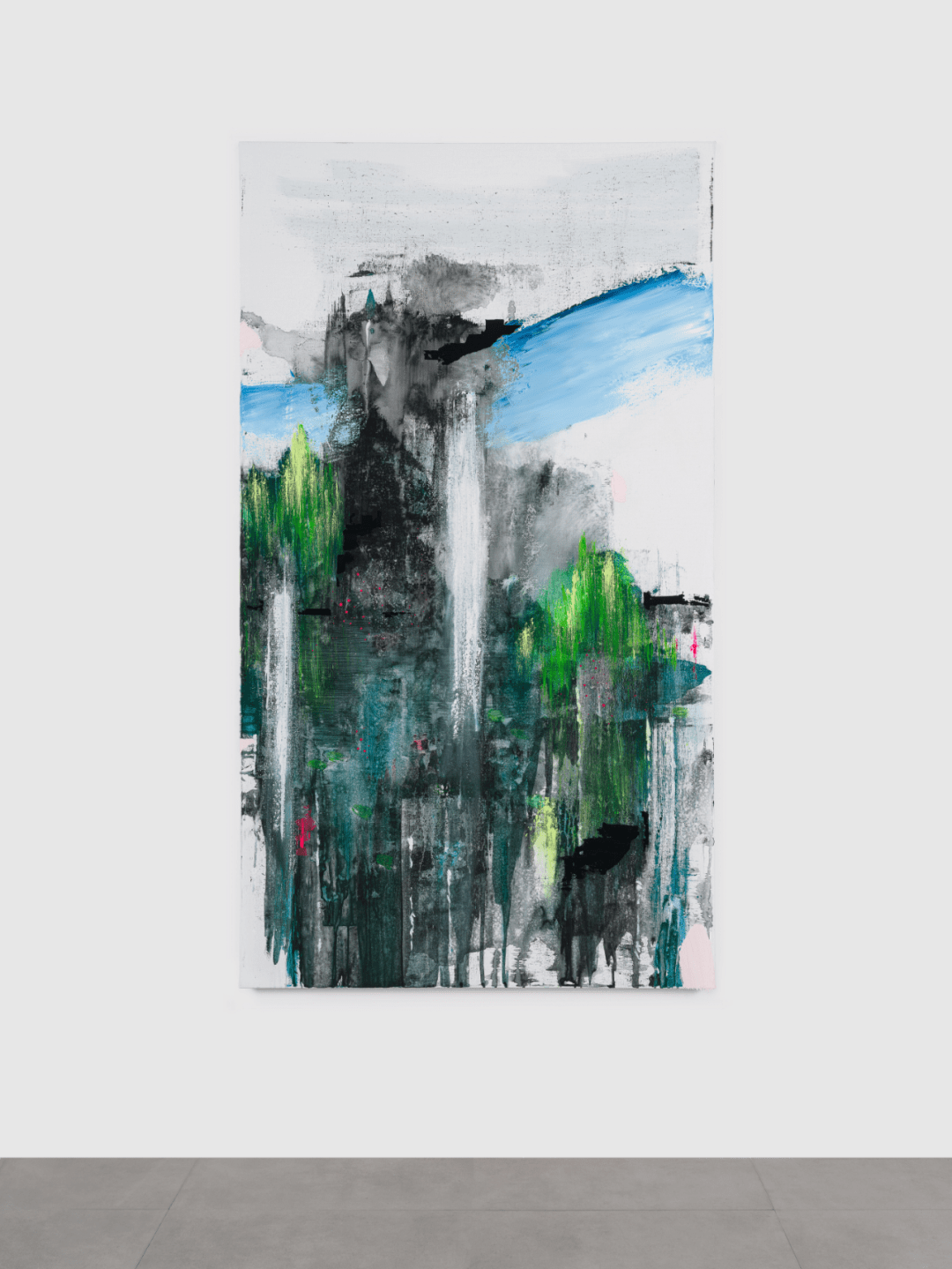
无题 Untitled
丙烯、油画和油棒在亚麻布上的创作 Acrylic, oil and oil stick on linen
160cmX90cm
2025
无题 Untitled
丙烯、油画和油棒在画布上的创作 Acrylic, oil, and oil stick on canvas
160cmX90cm
2025
无题 Untitled
丙烯、油画和油棒在画布上的创作 Acrylic, oil, and oil stick on canvas
160cmX90cm
2025
无题 Untitled
丙烯、油画和油棒在亚麻布上的创作 Acylic, oil and oil stick on linen
160cmX90cm
2025
无题 Untitled
丙烯、油画和油棒在亚麻布上的创作 Acrylic, oil, and oil stick on linen
160cmX360cm | poliptych
2025
无题 Untitled
丙烯、油画和油棒在亚麻布上的创作 Acrylic, oil and oil stick on linen
160cmX90cm
2025
无题 Untitled
丙烯、油画和油棒在亚麻布上的创作 Acrylic, oil and oil stick on linen
160cmX90cm
2025
古老的共鸣
那首倍增、切割又飘走的歌声
ANCIENT RESONANCES
THE SONG THAT MULTIPLIES, CUTS, AND ALSO DRIFTS AWAY
音频作品,180秒 Audio, 180”
扩音器,优盘,聚氨酯瓷砖 Megaphone, mp3 file, polyurethane tiles
2025
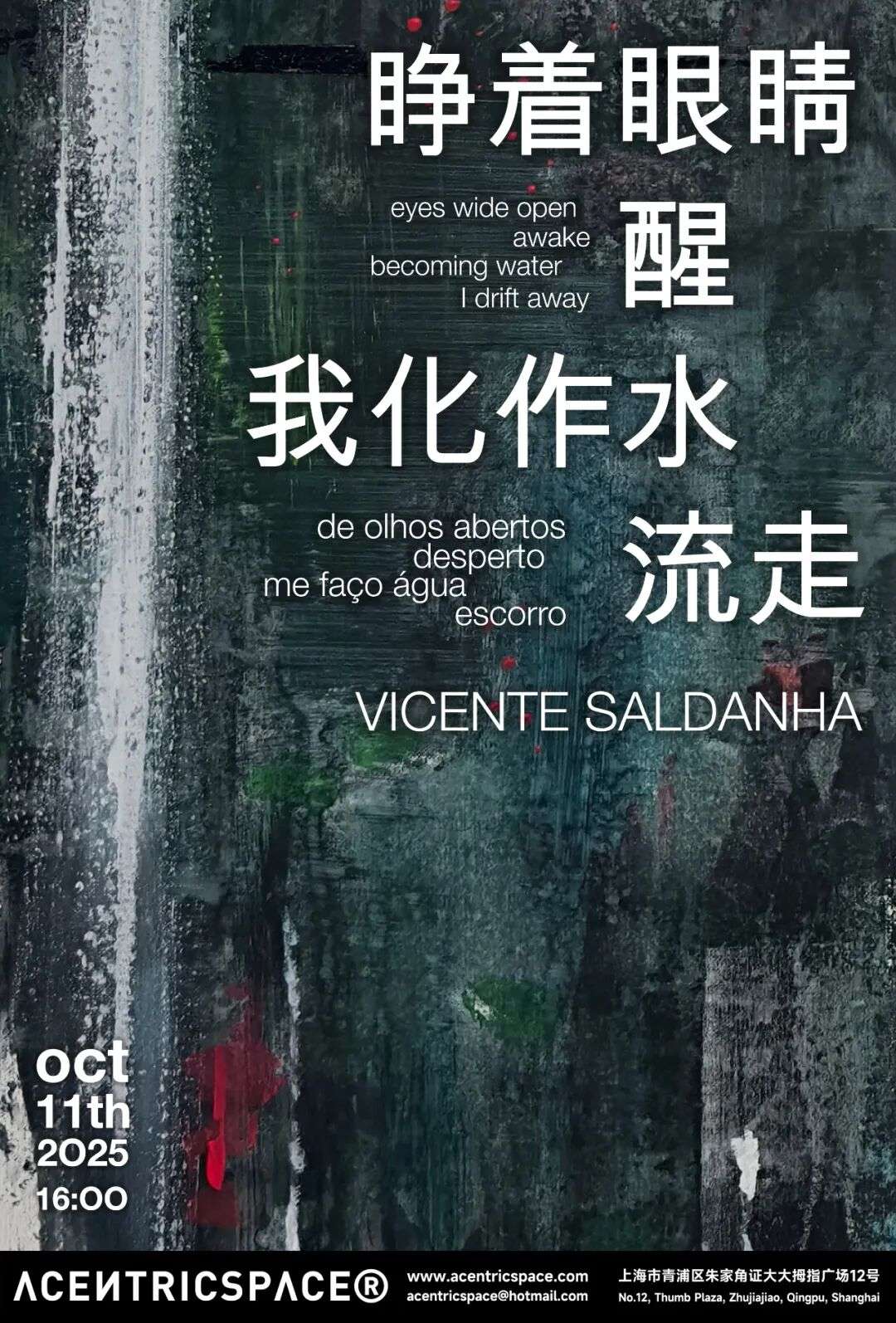

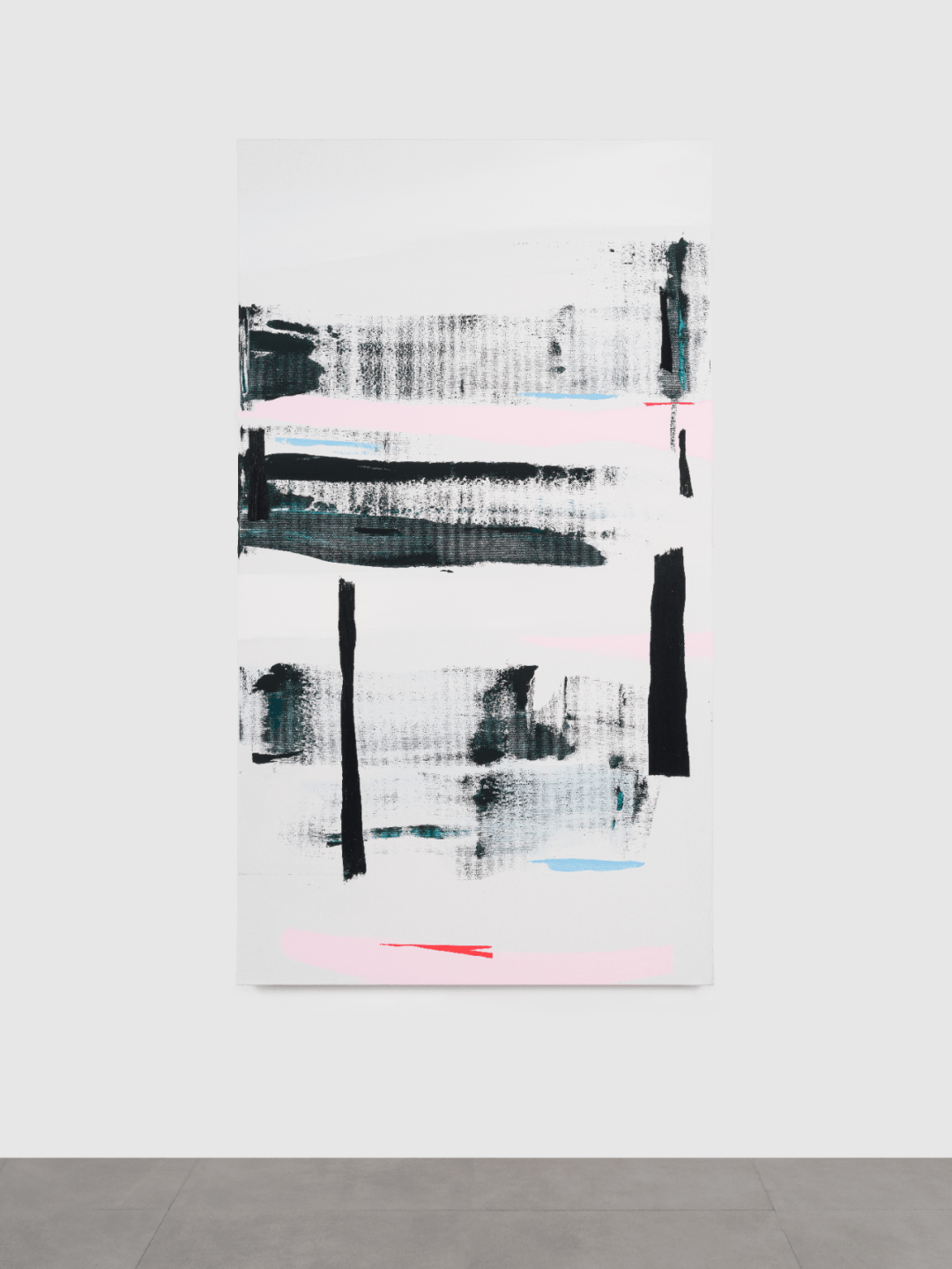
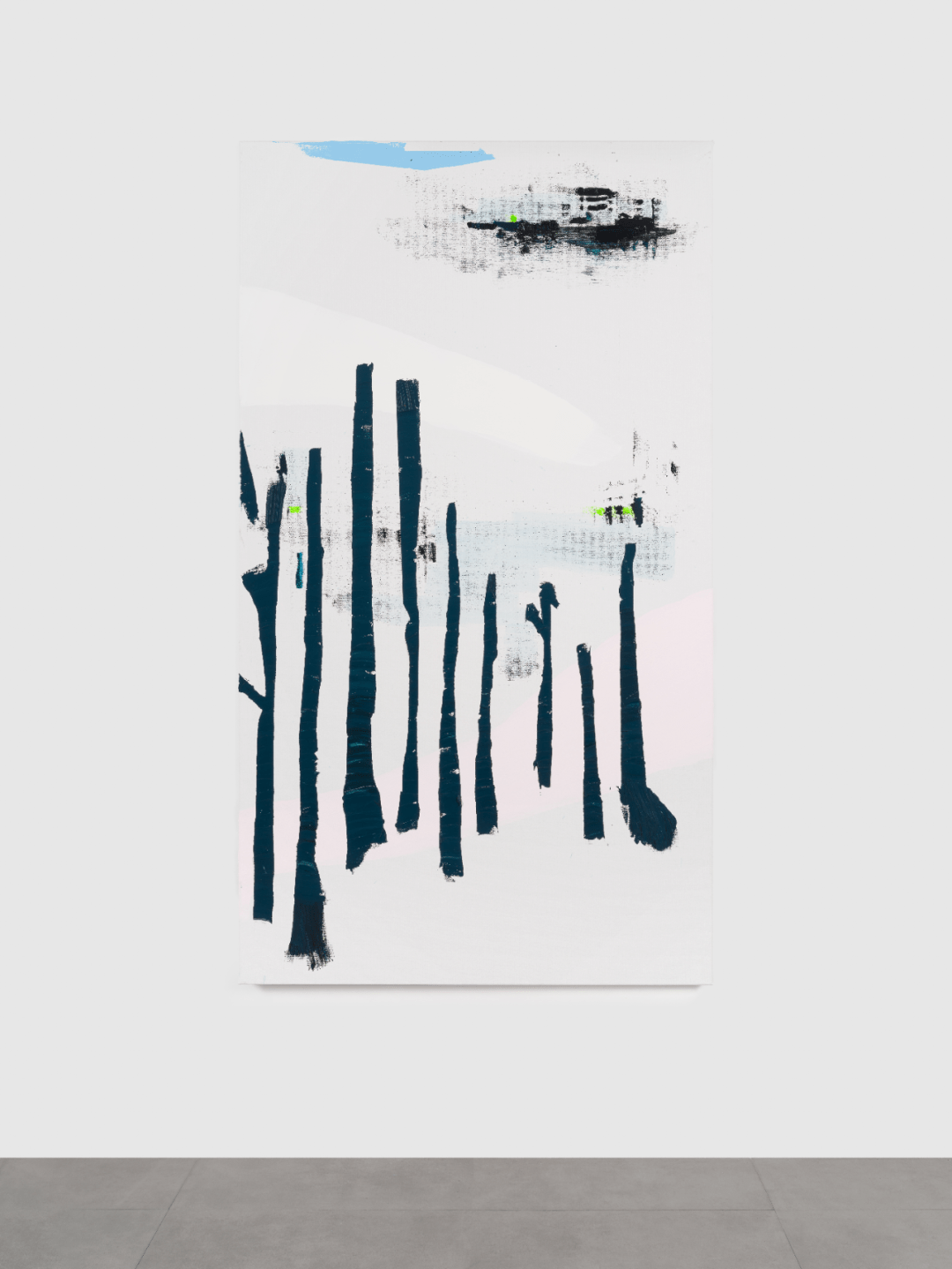
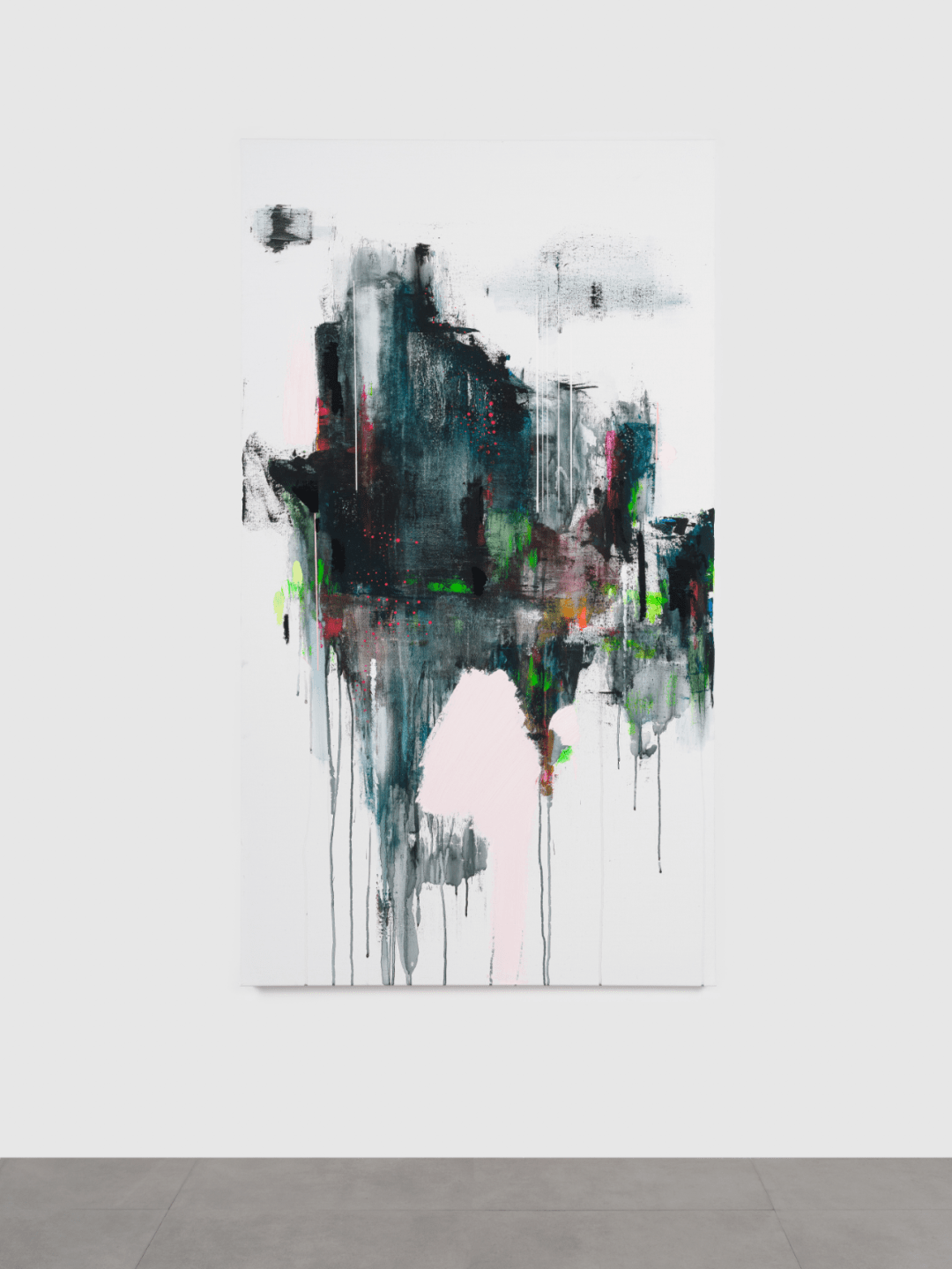
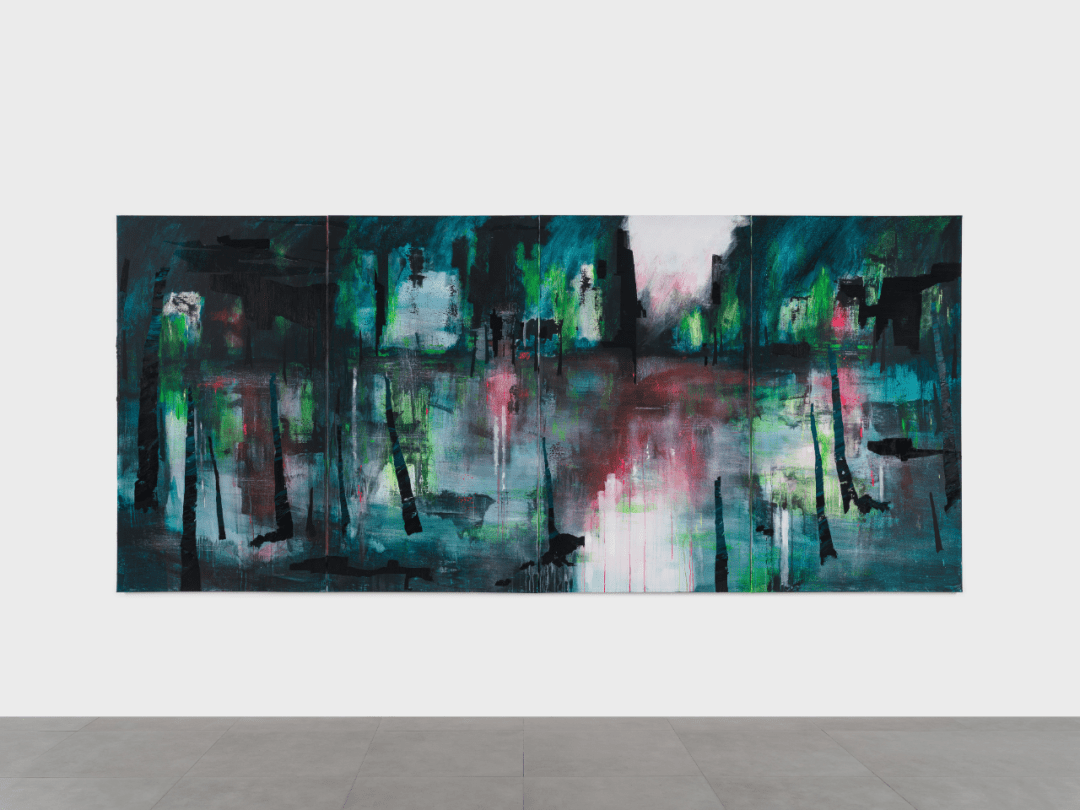
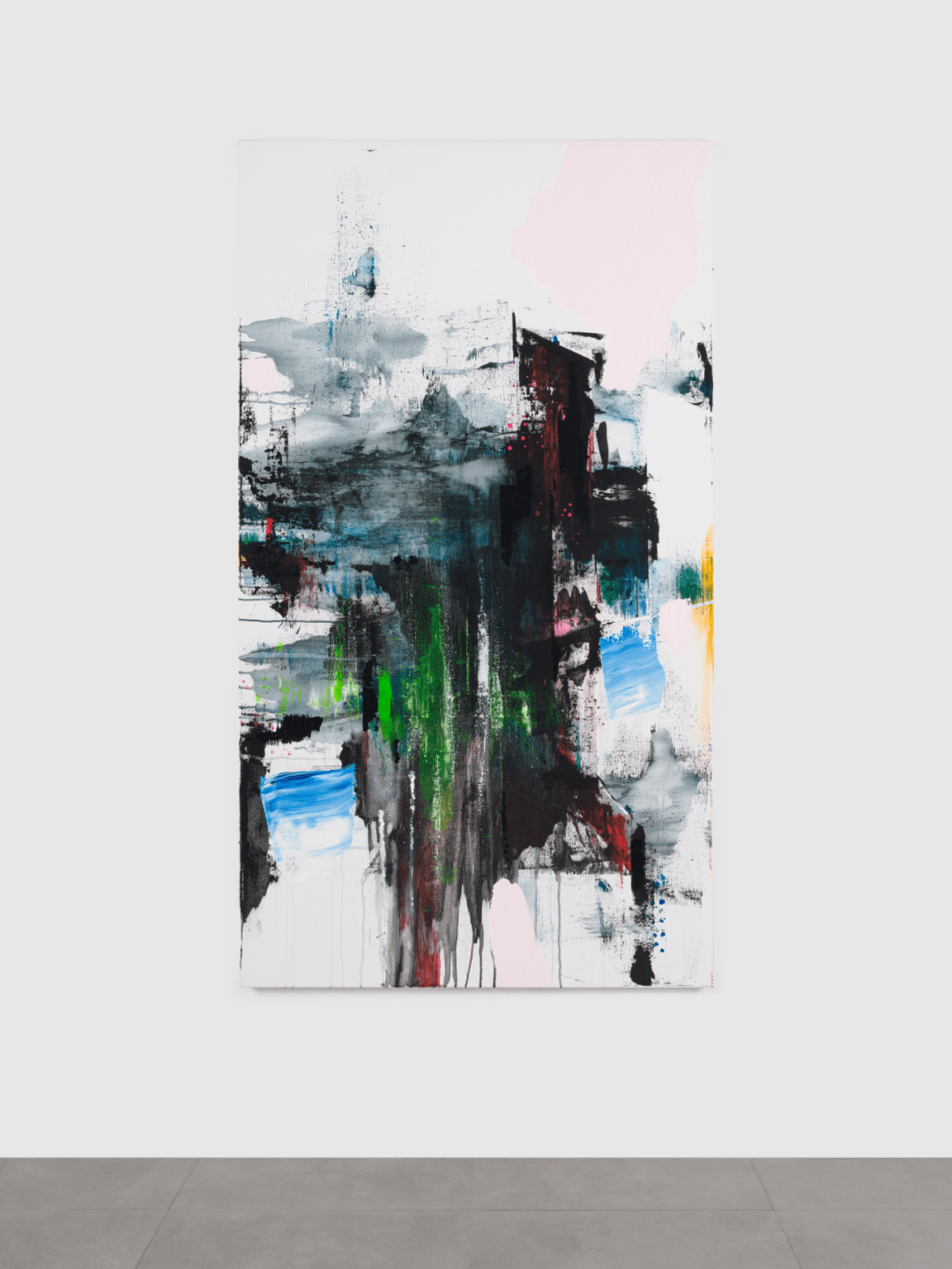
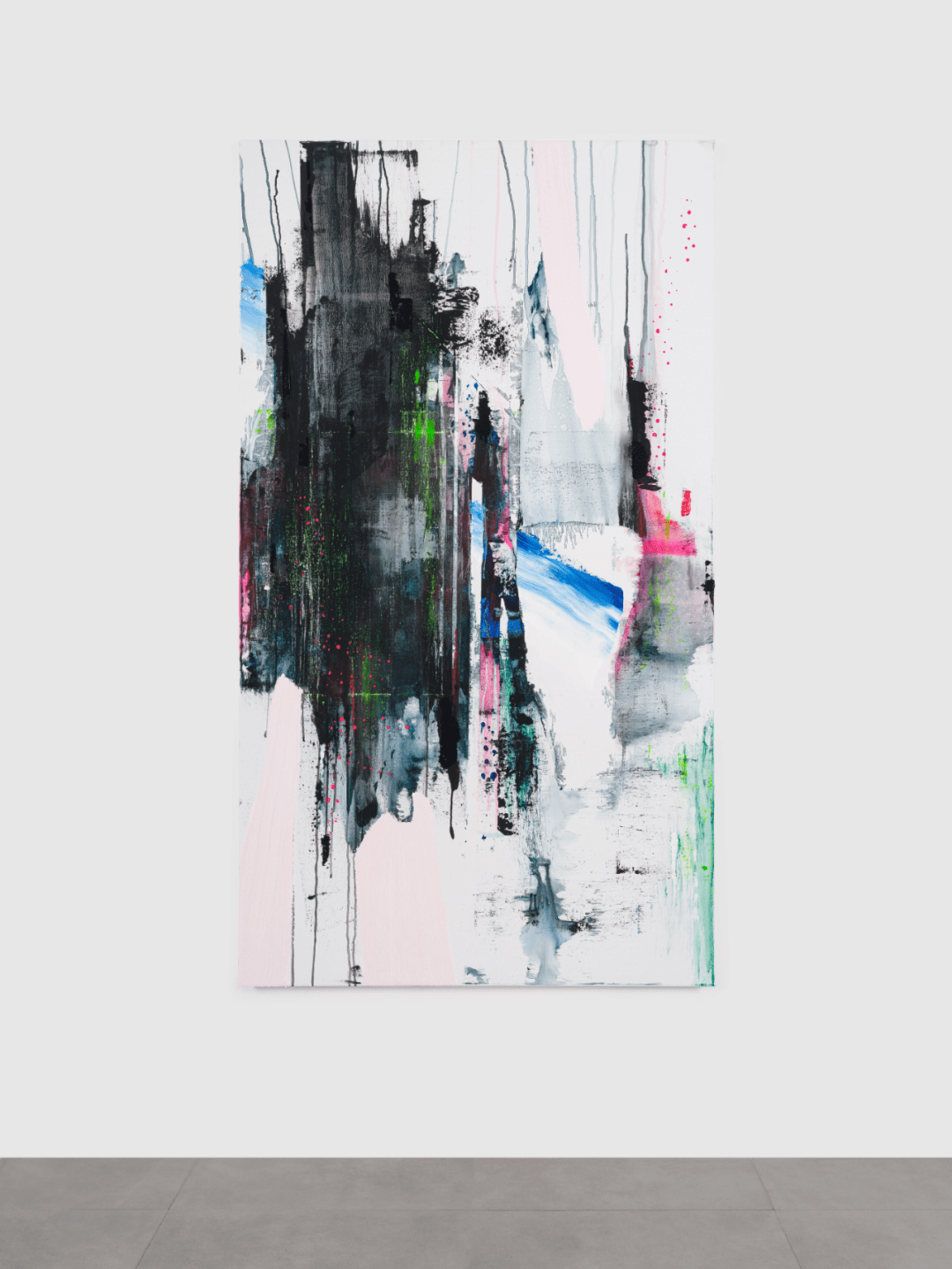
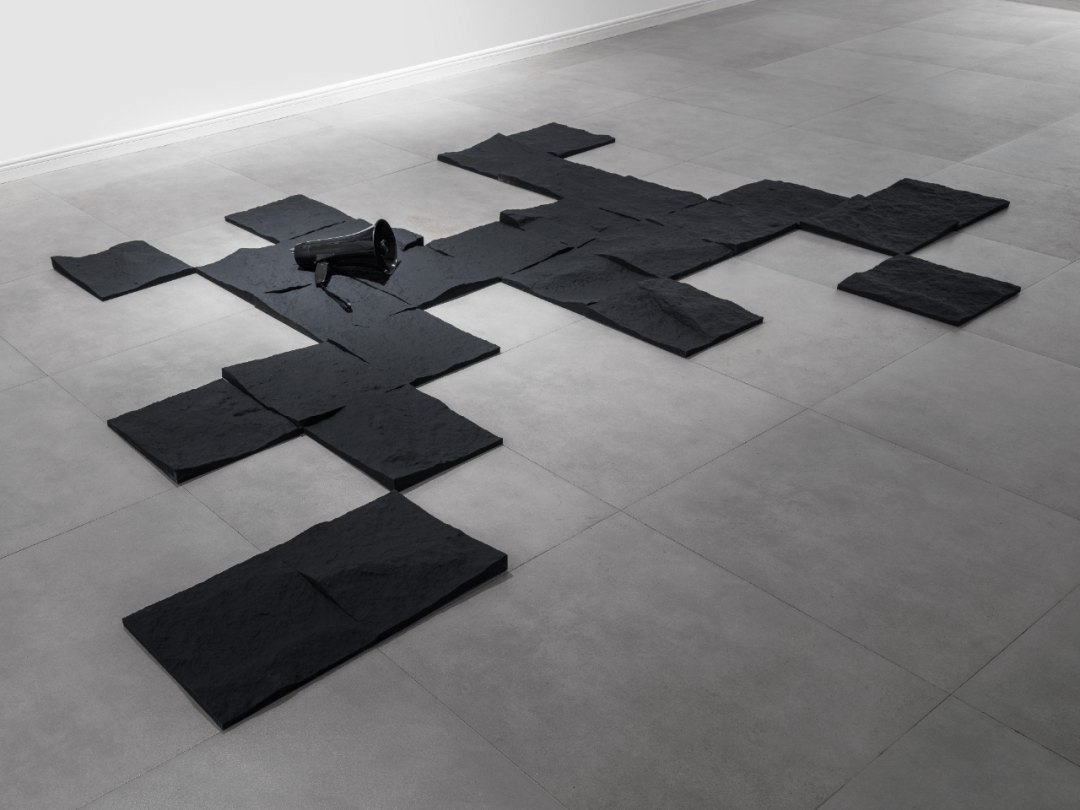
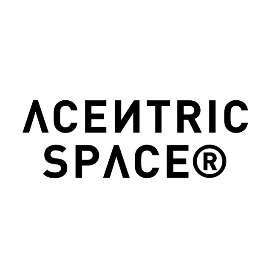
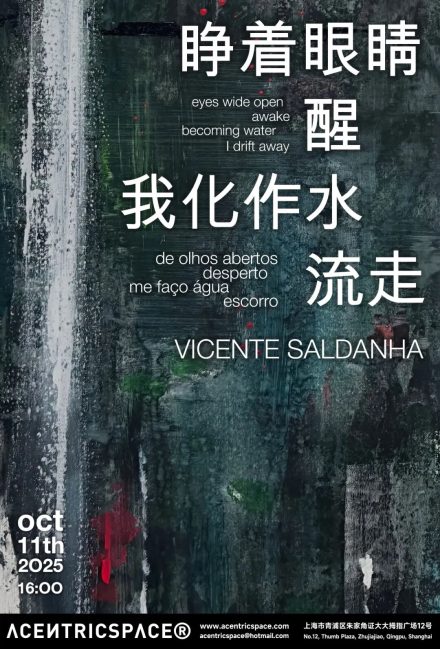
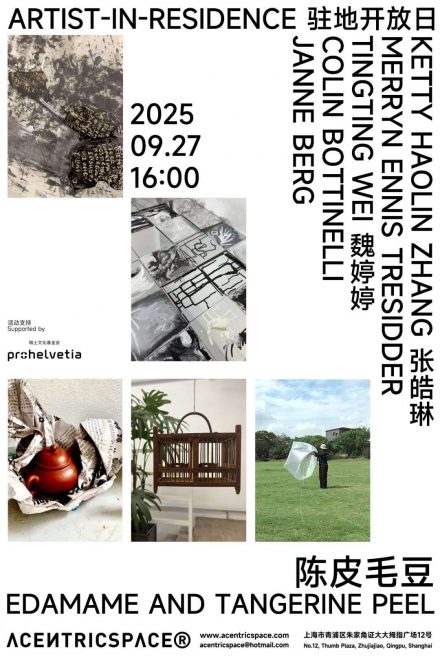
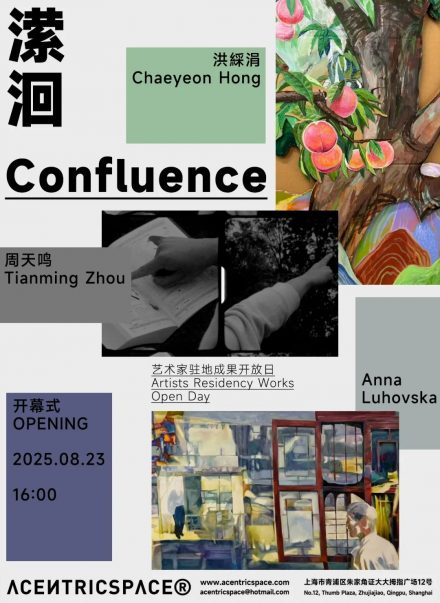
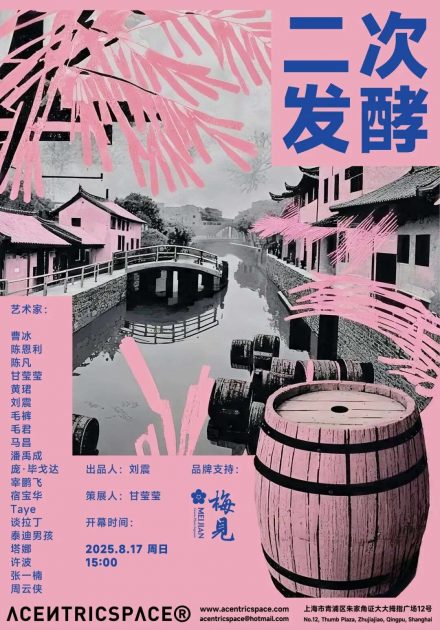
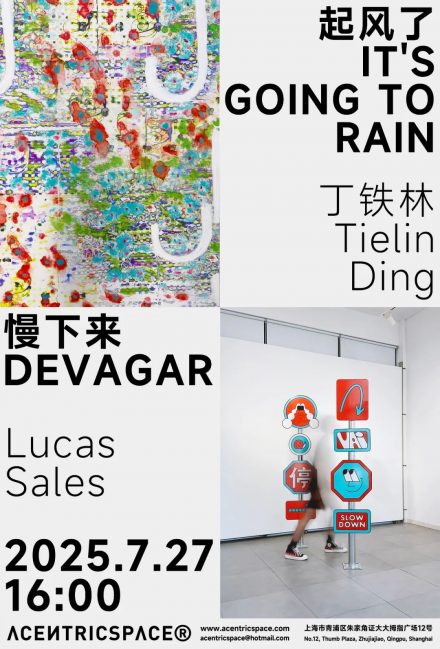
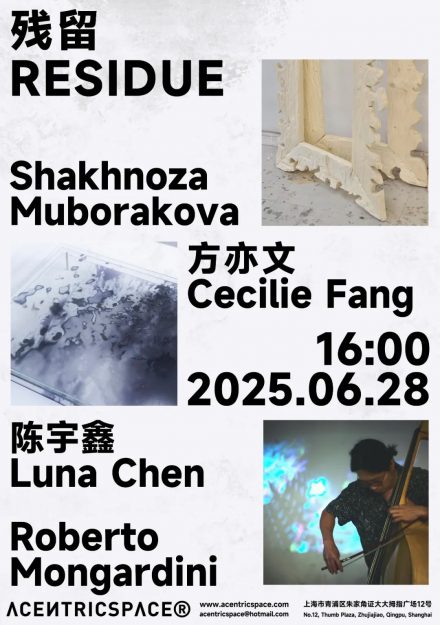
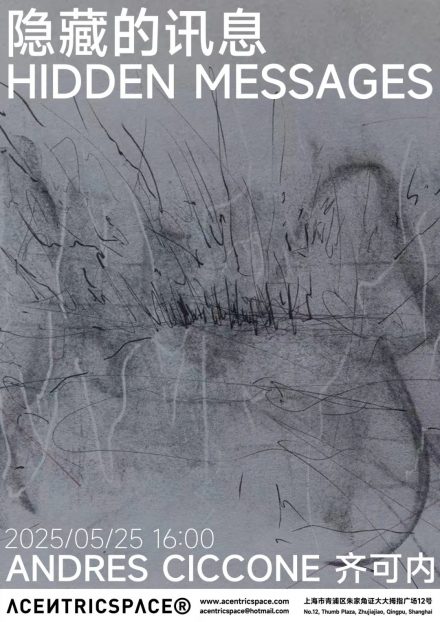
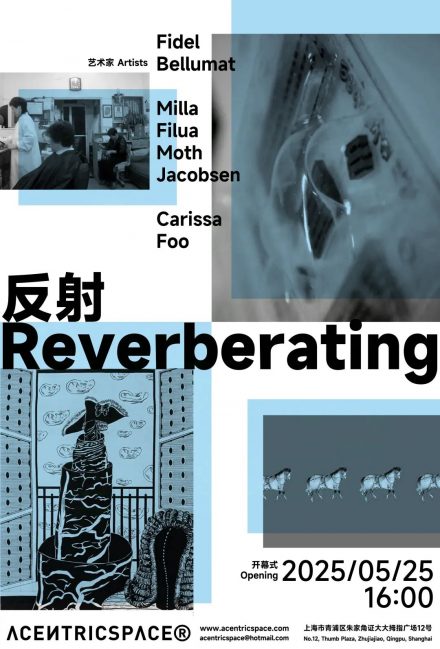
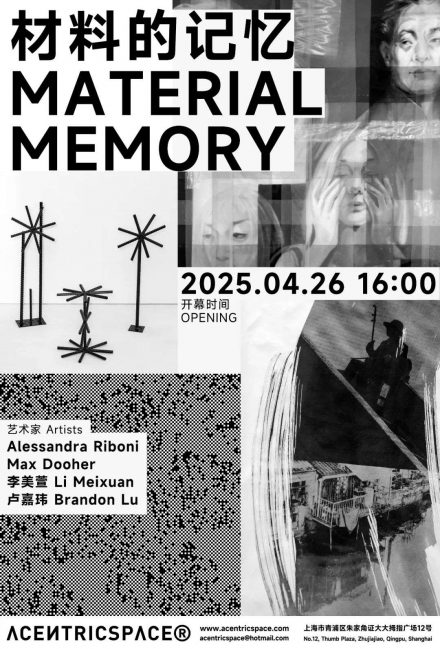
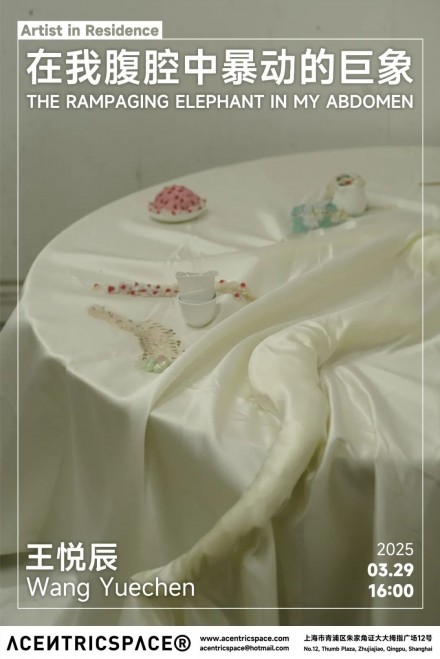
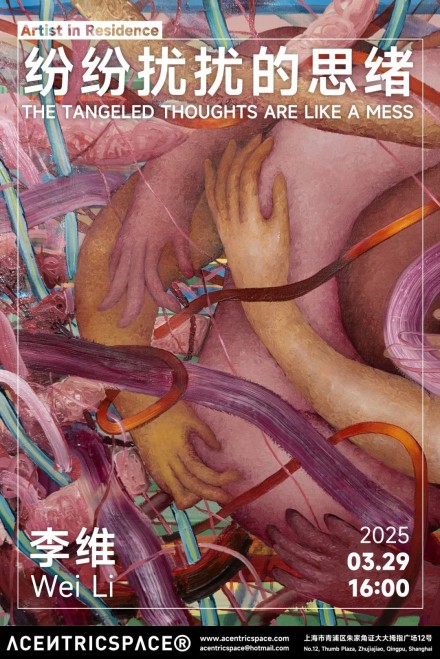
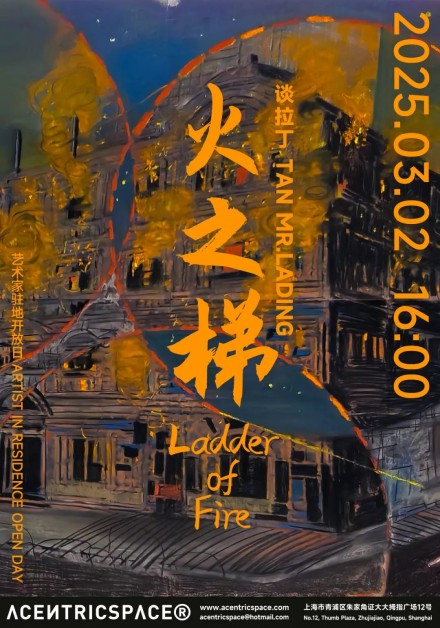
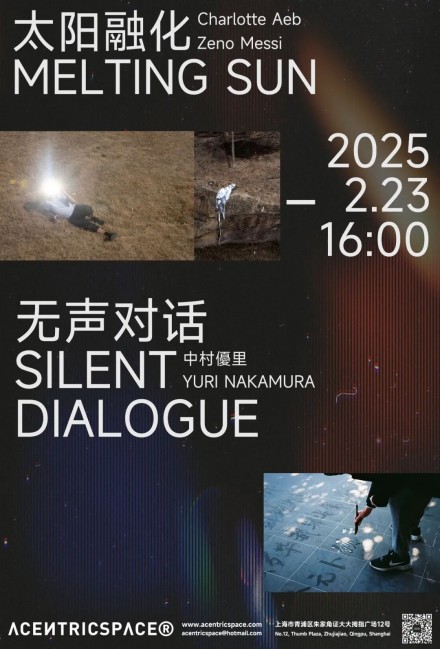
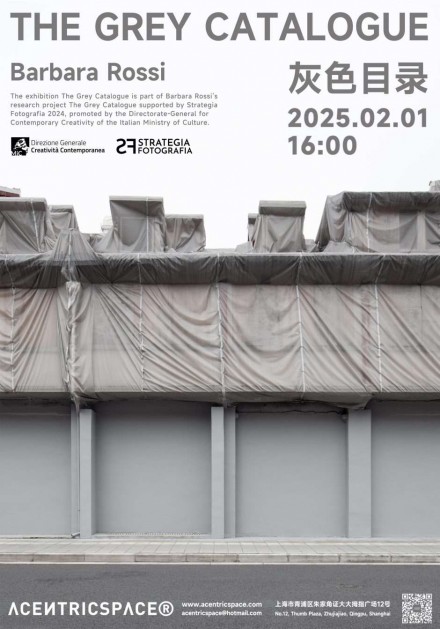
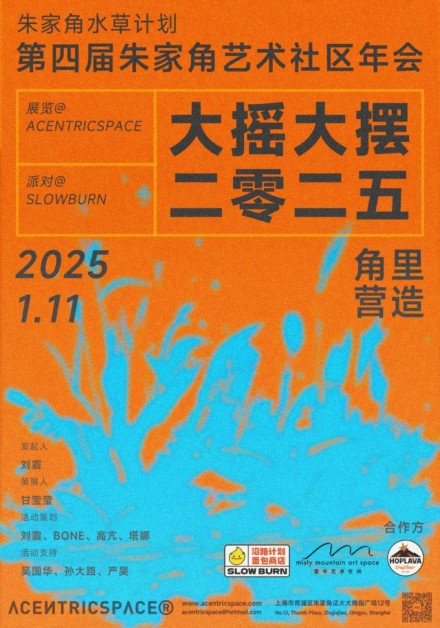
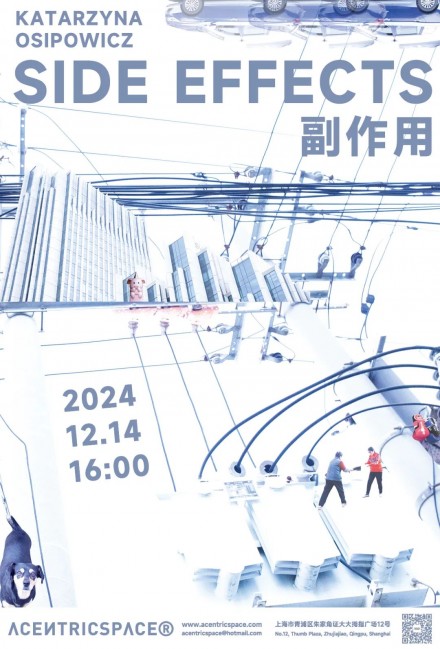
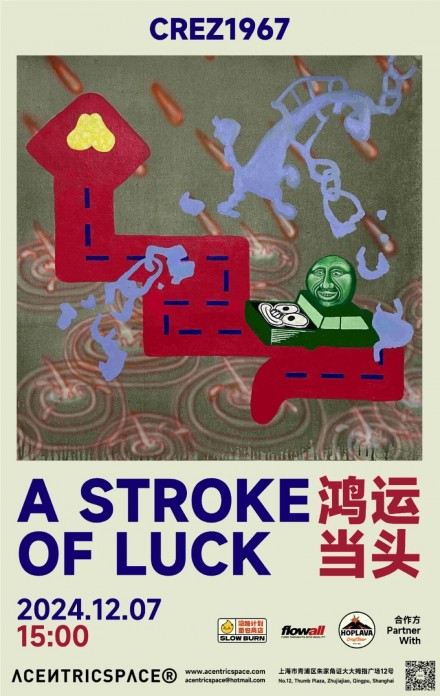
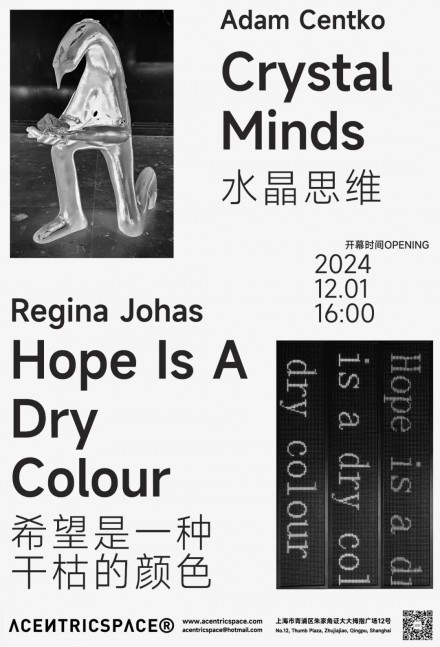
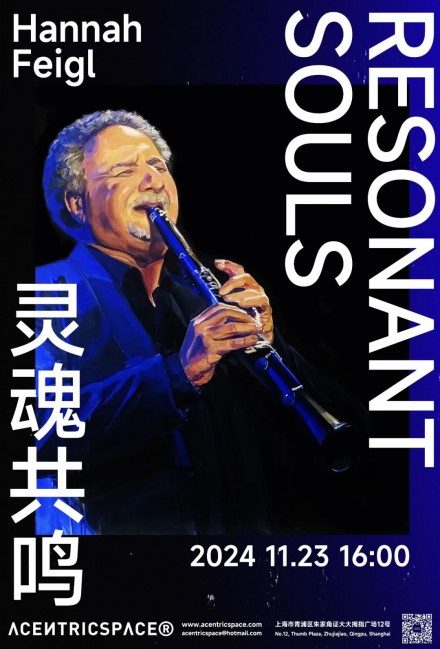
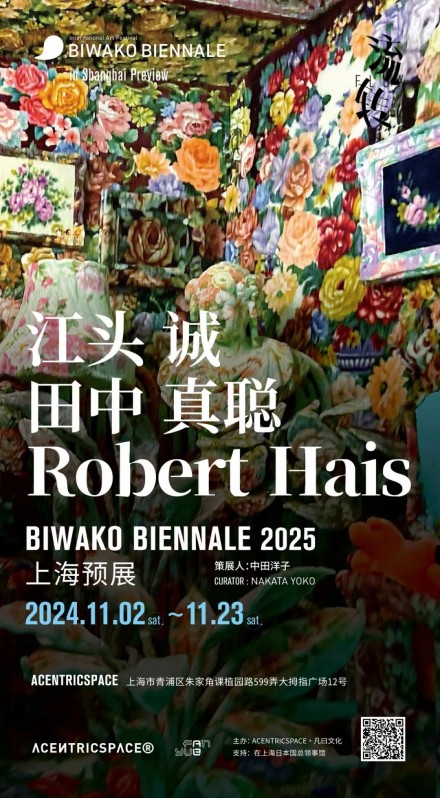
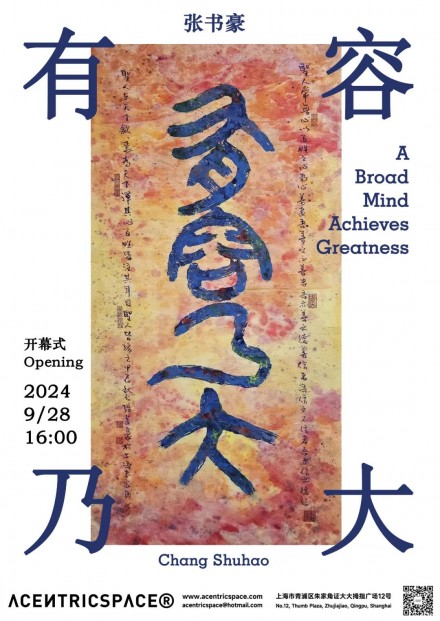
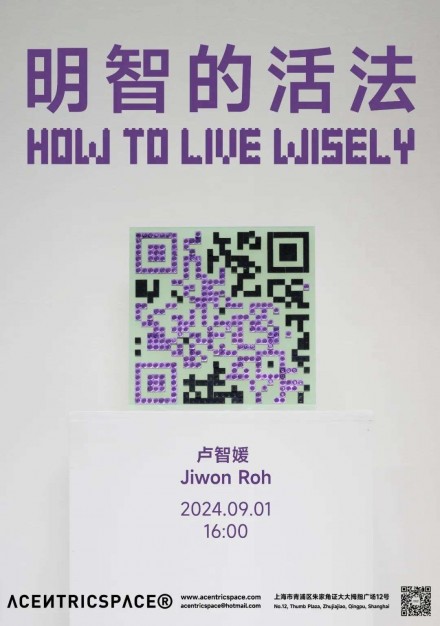
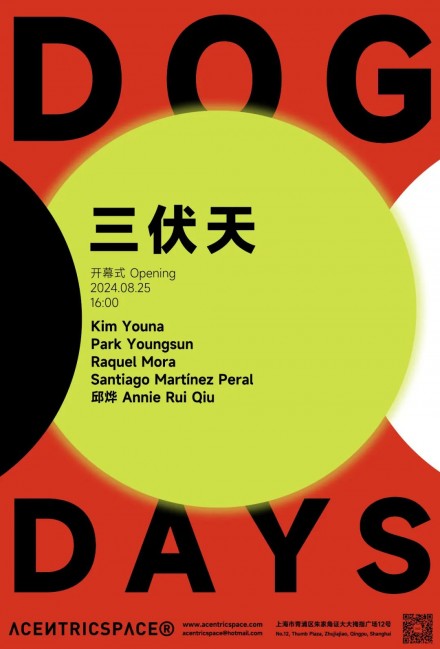
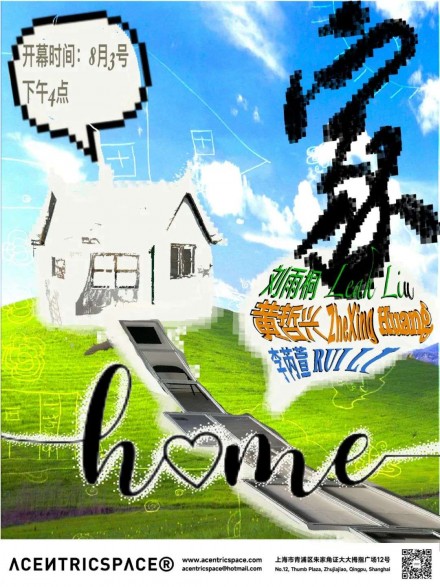
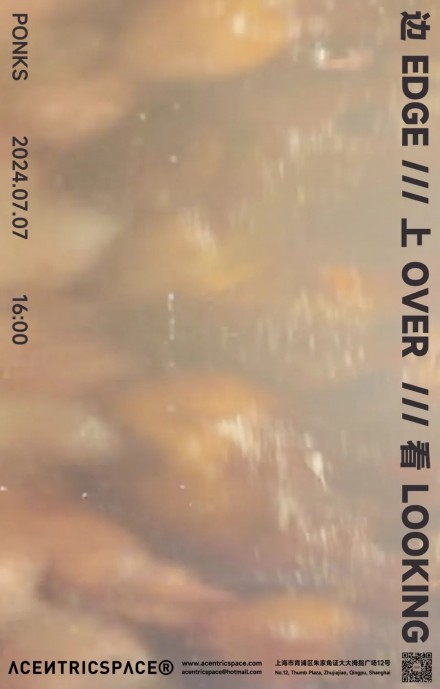
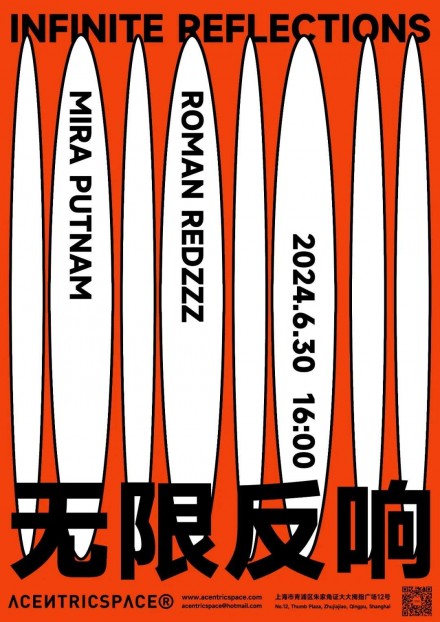
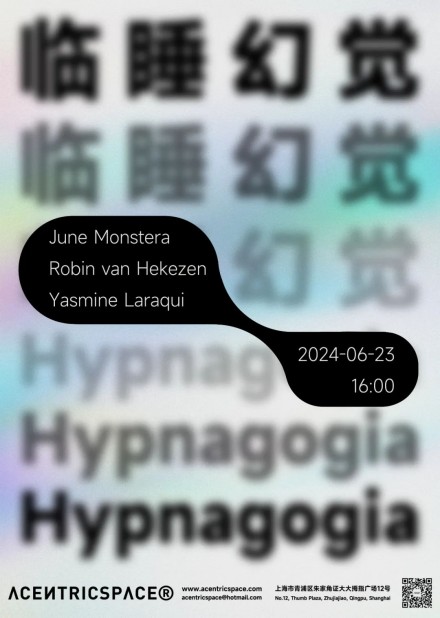
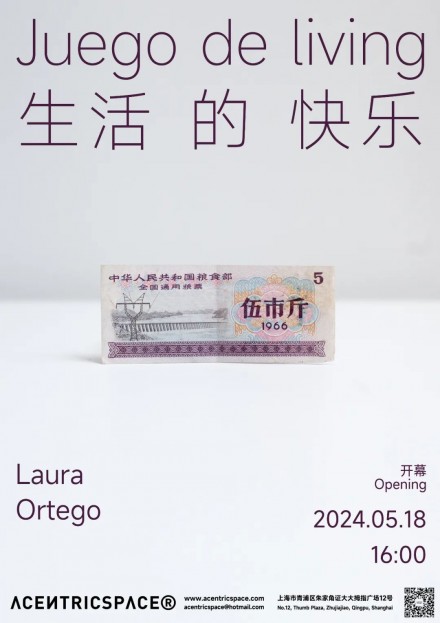
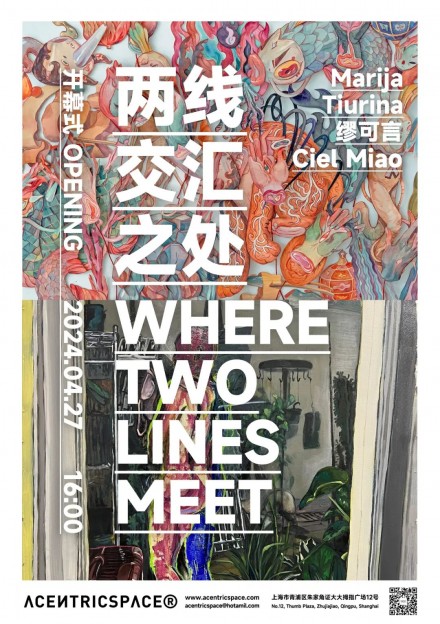
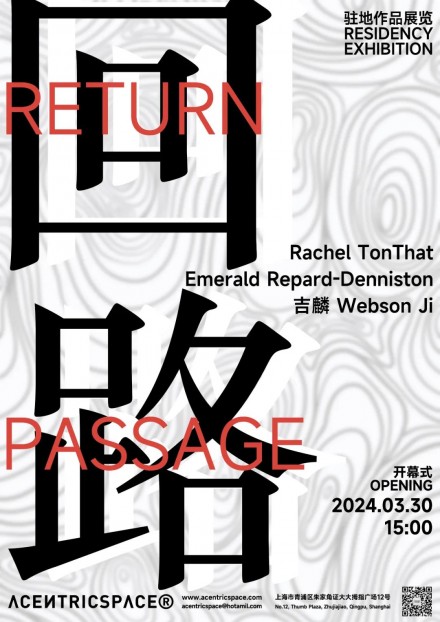
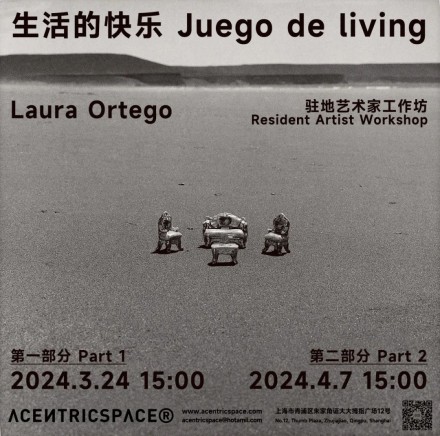
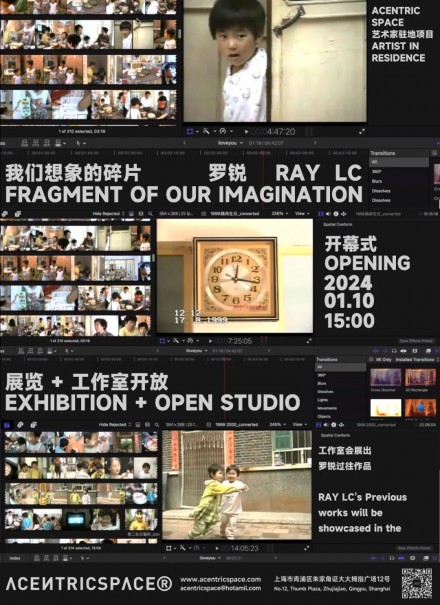
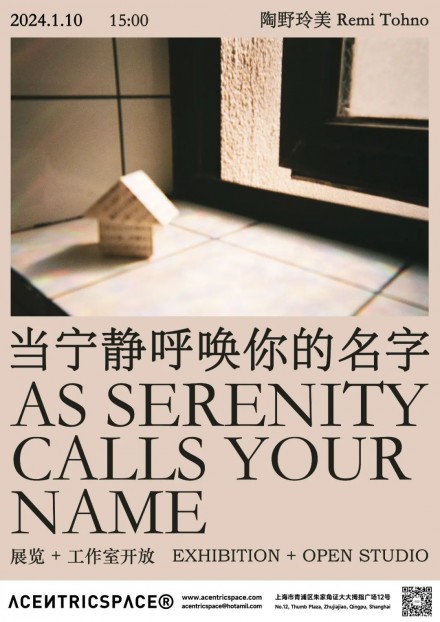
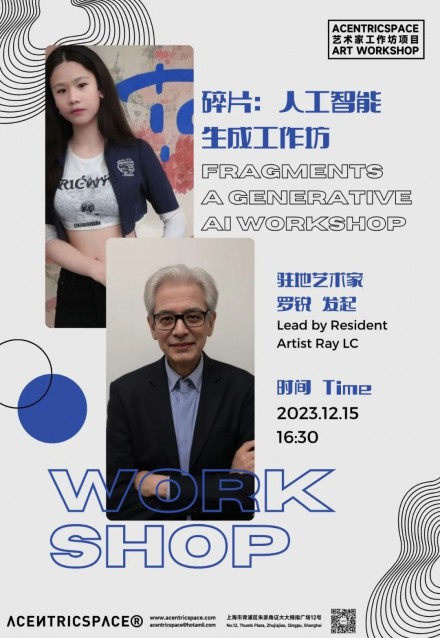
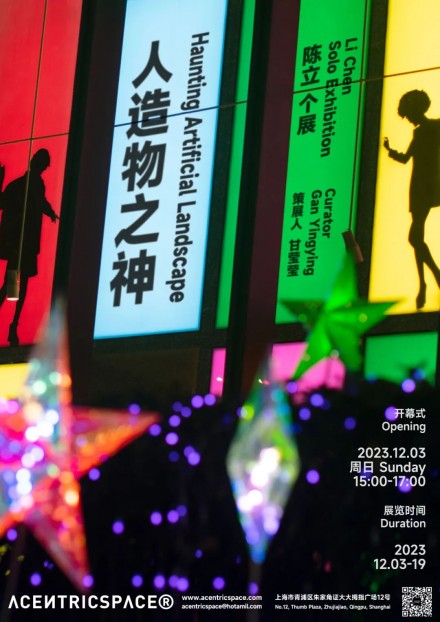
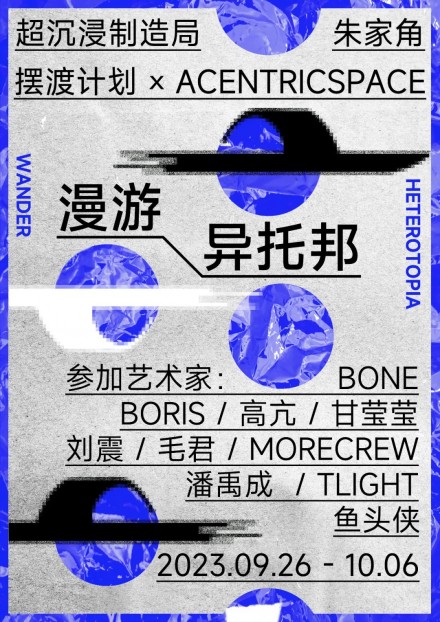
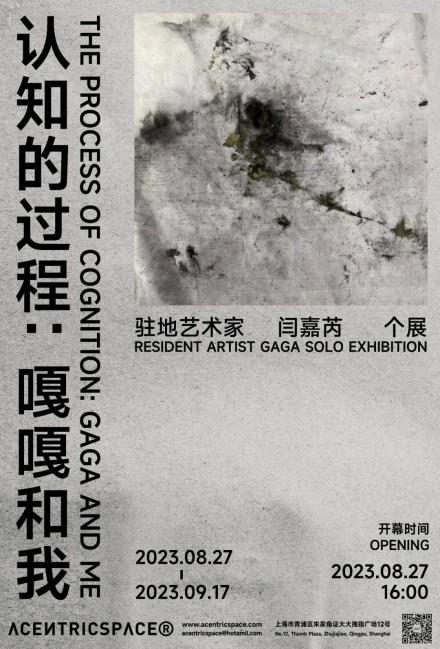
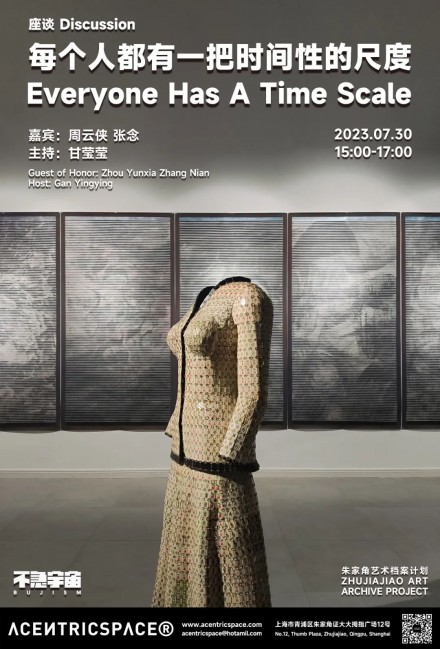
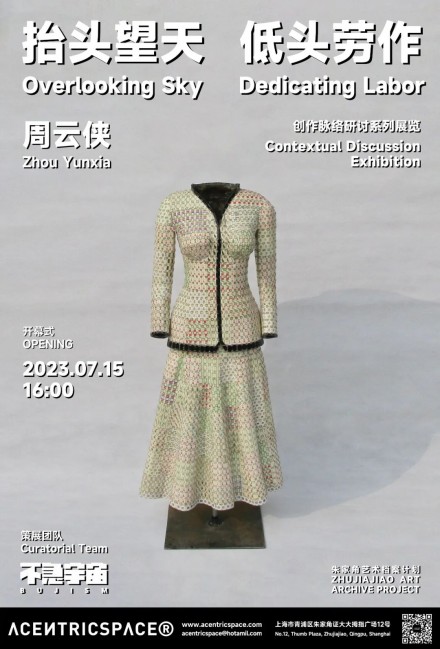
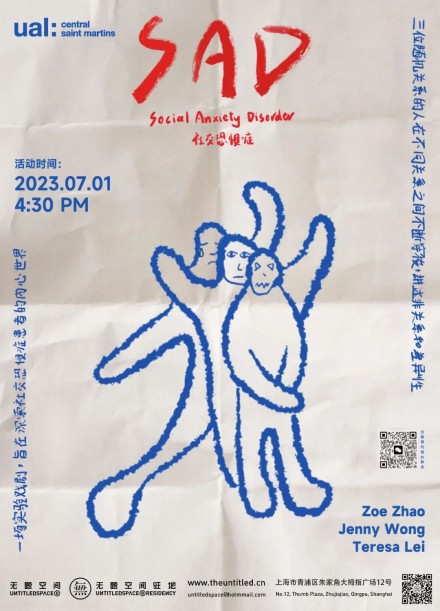
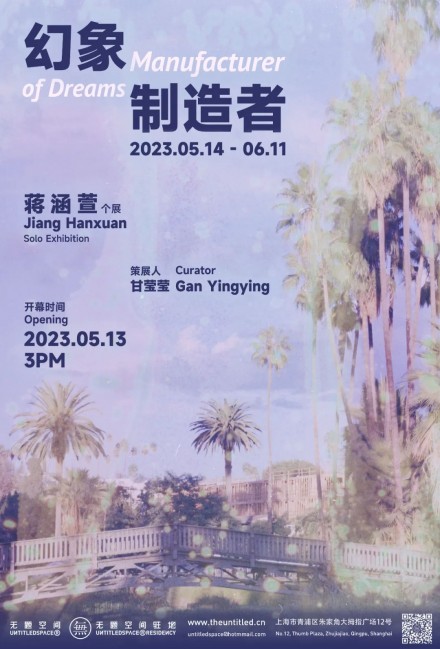
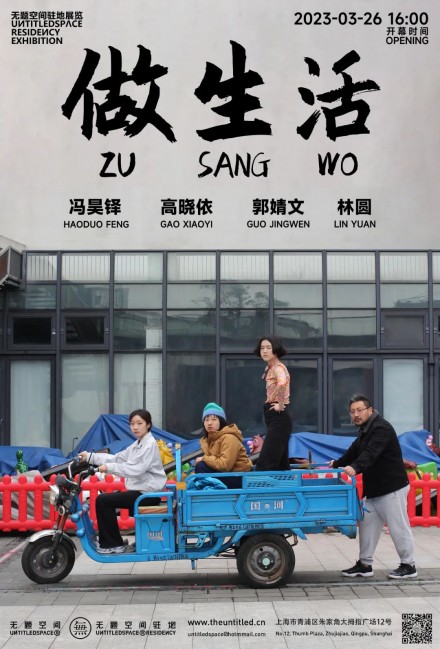
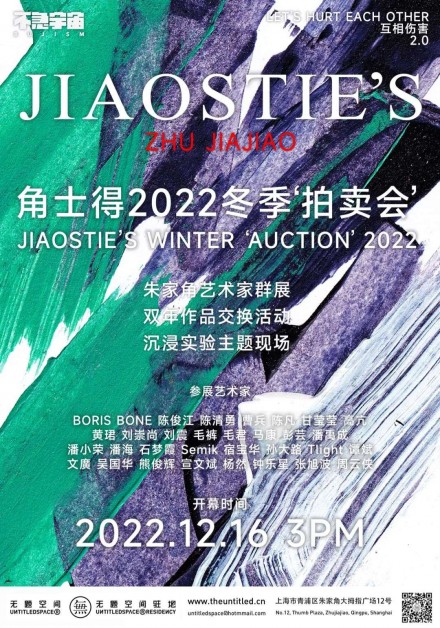
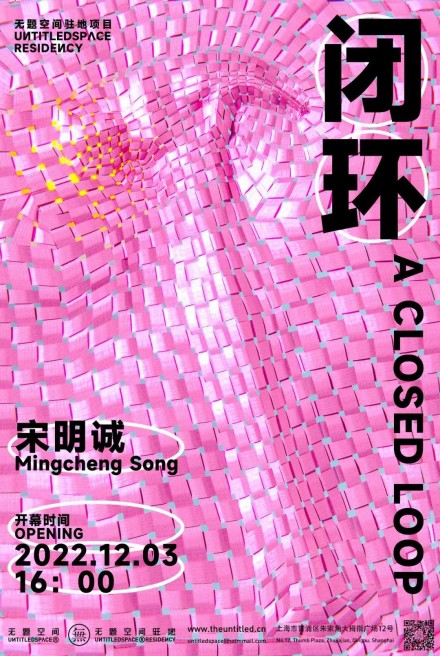
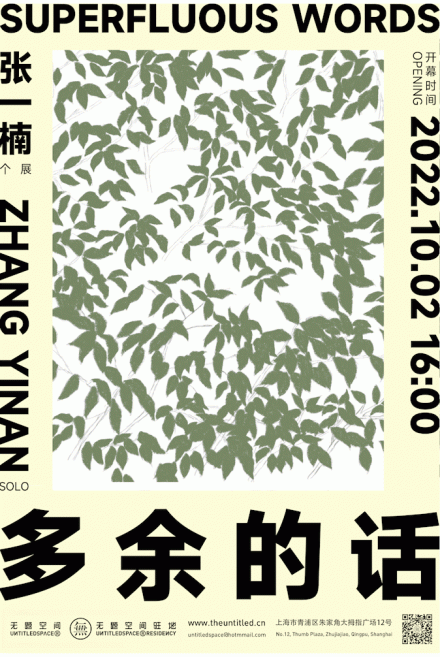
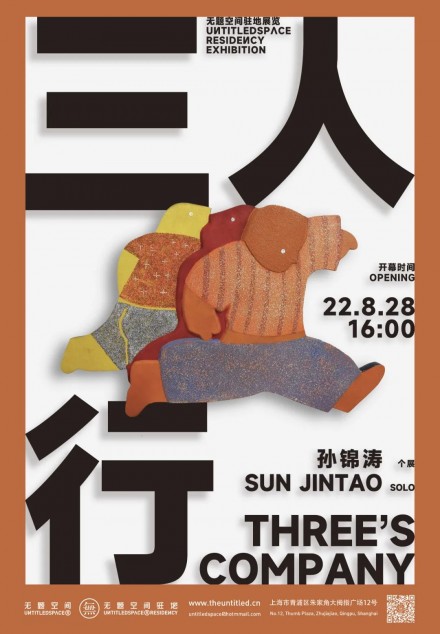
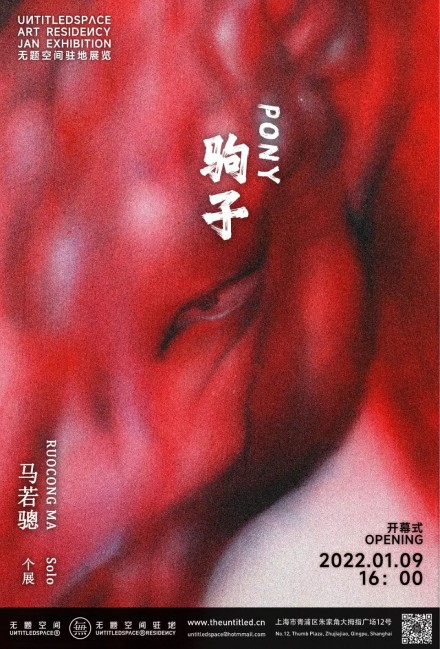
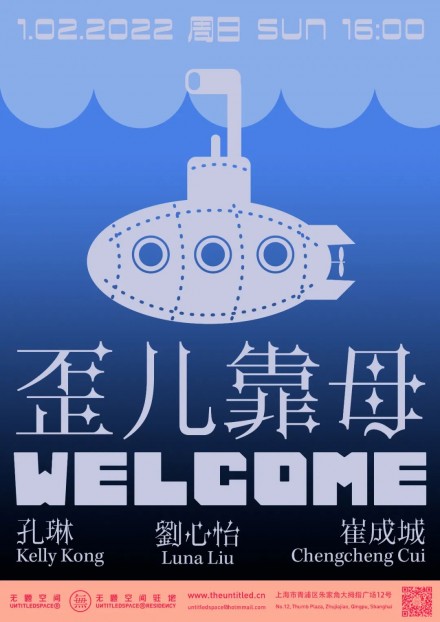
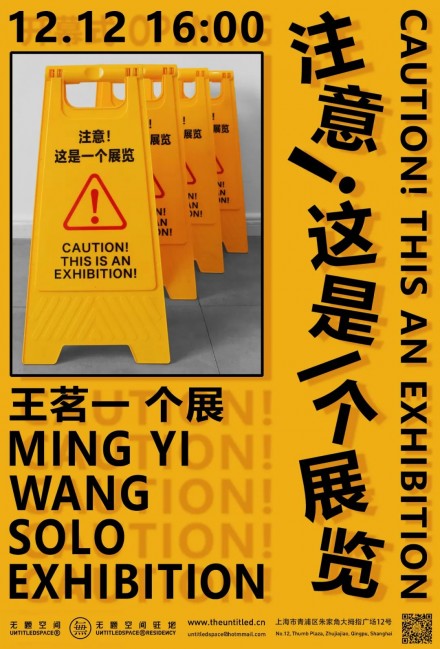
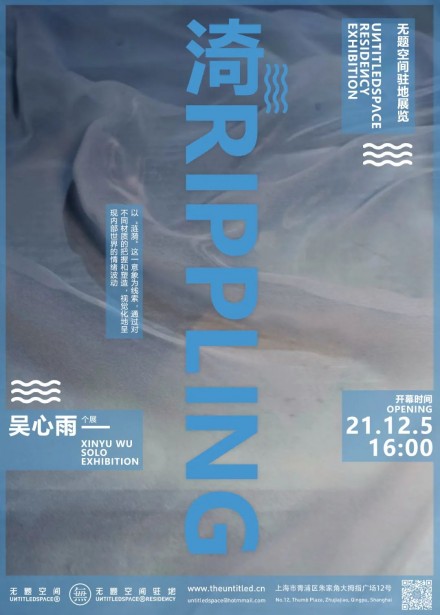
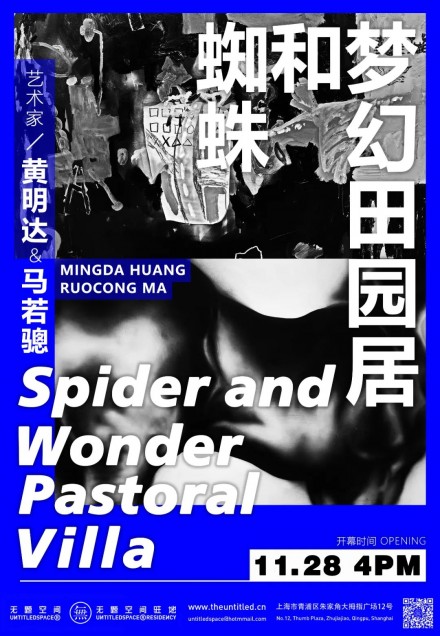
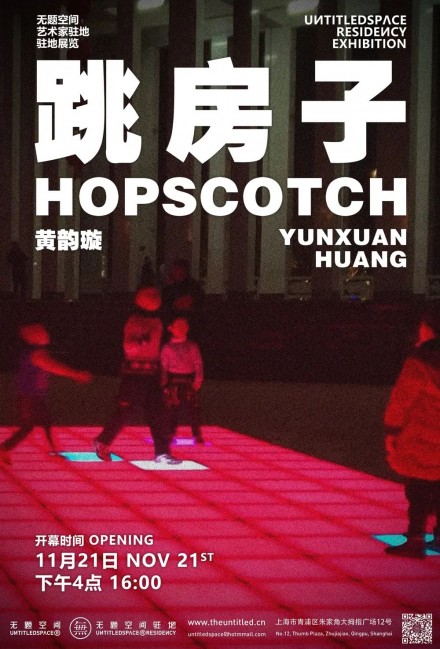
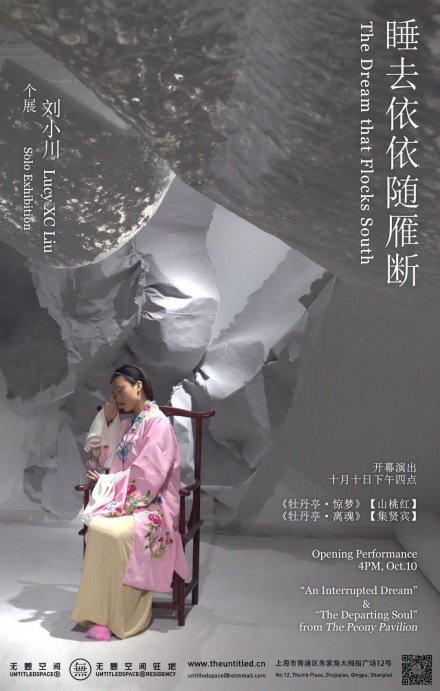
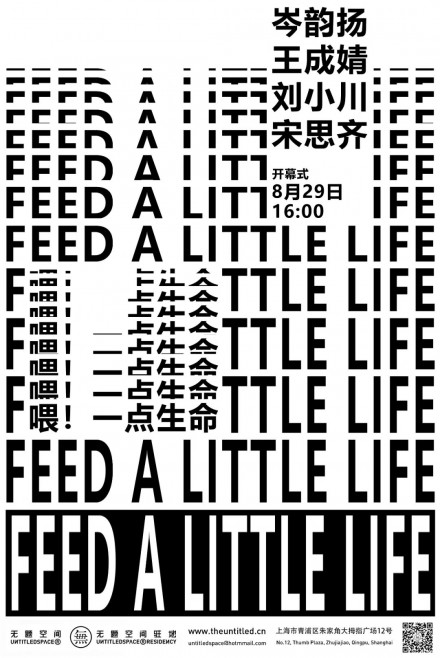
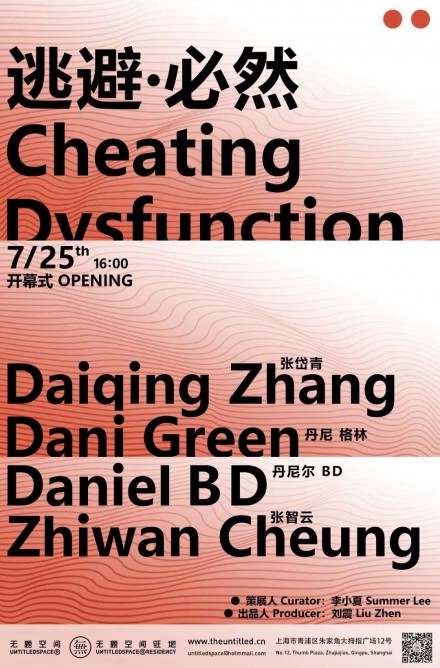
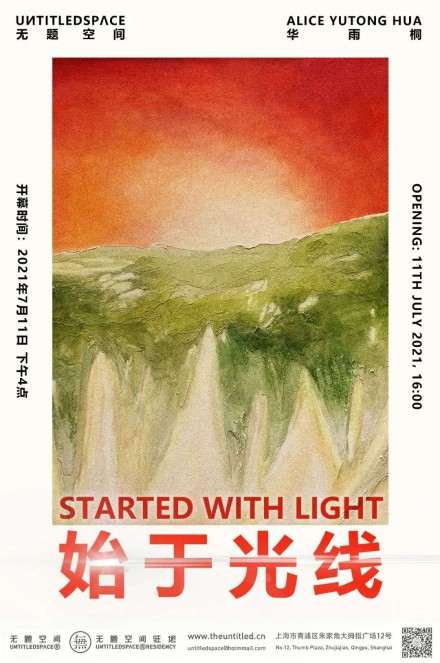
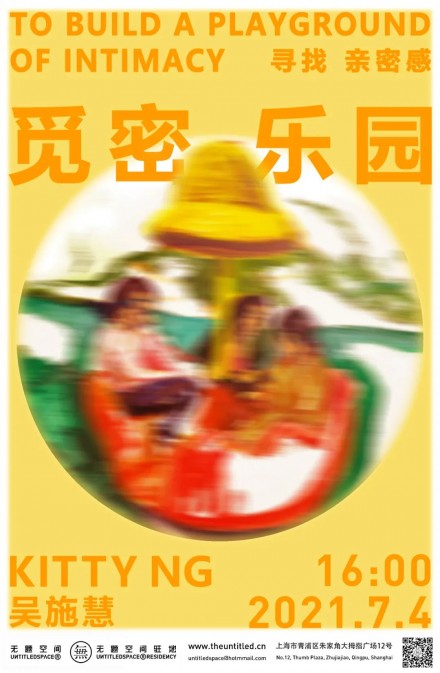
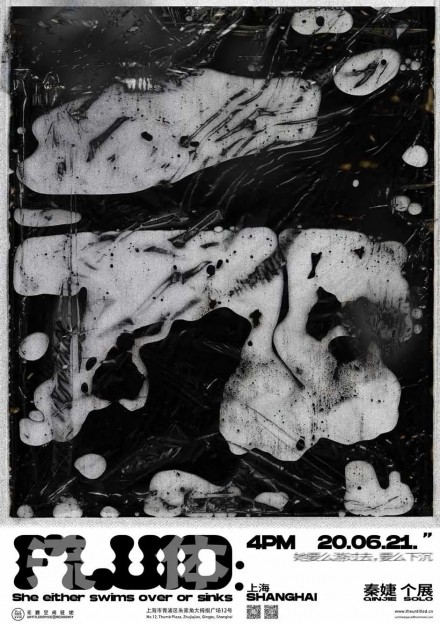
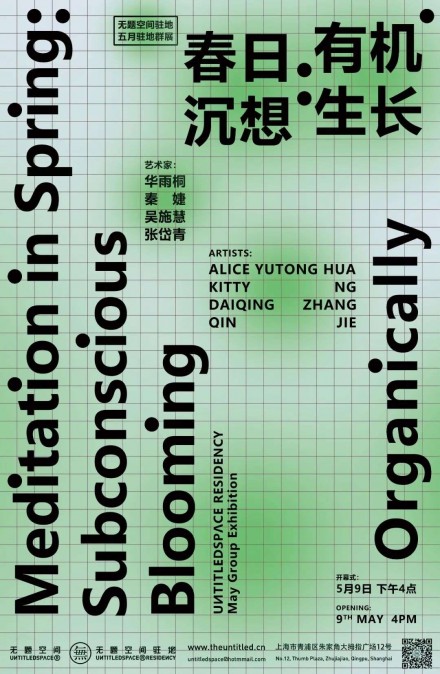

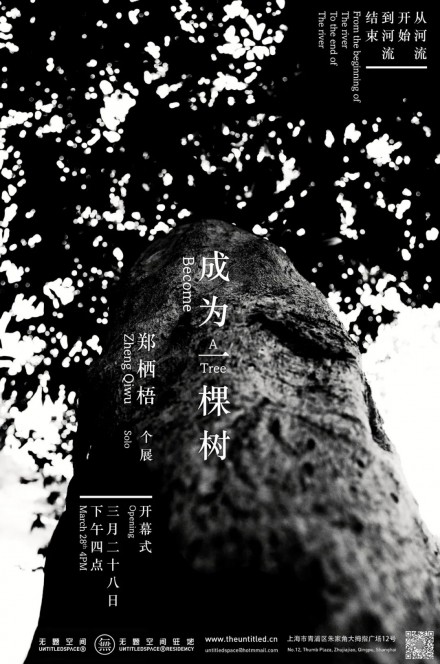
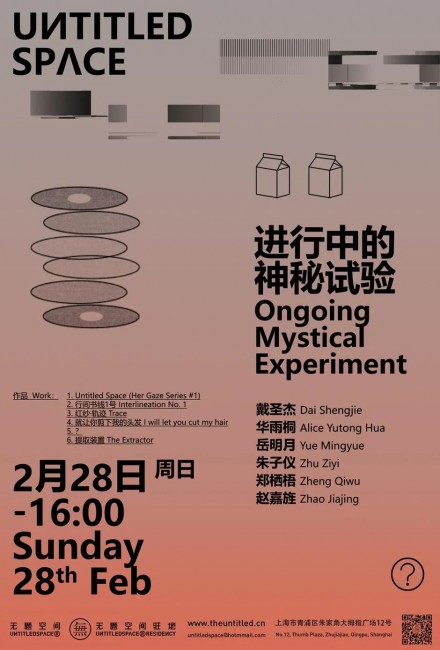
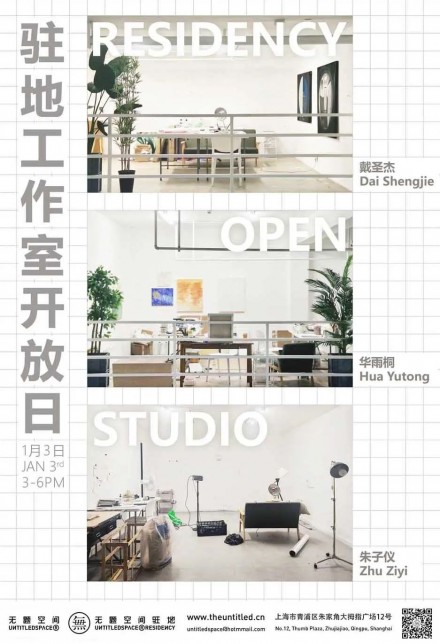
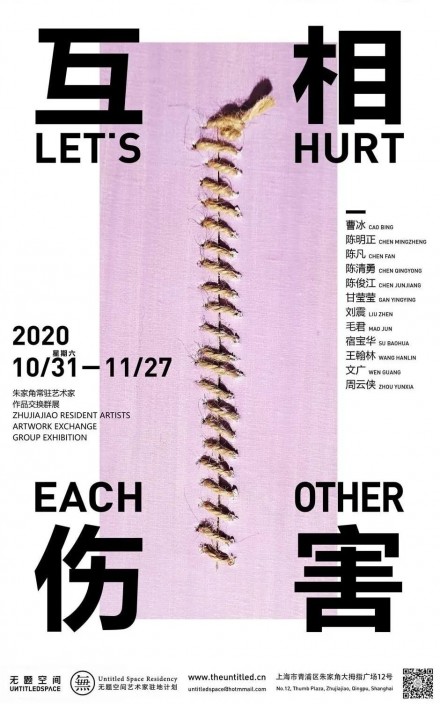
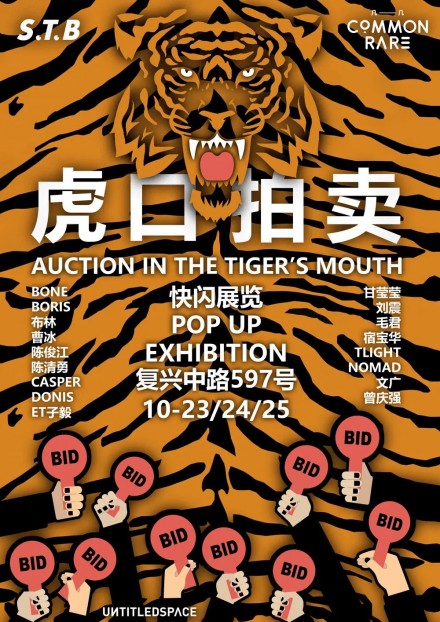
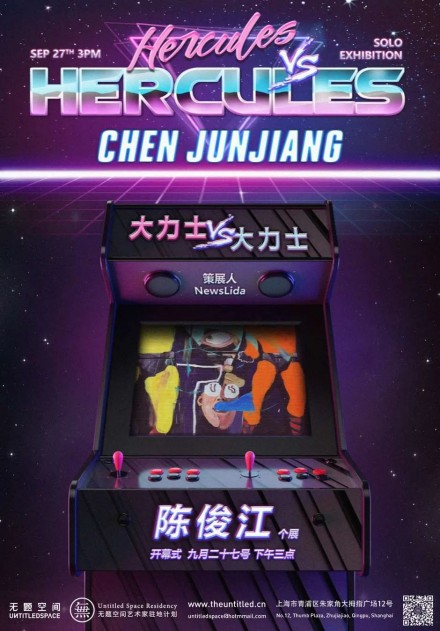
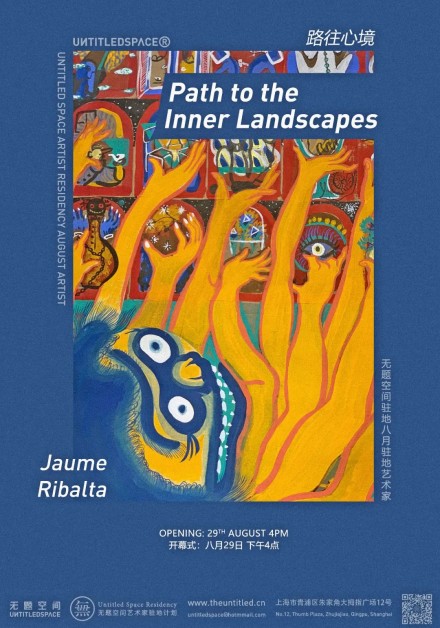
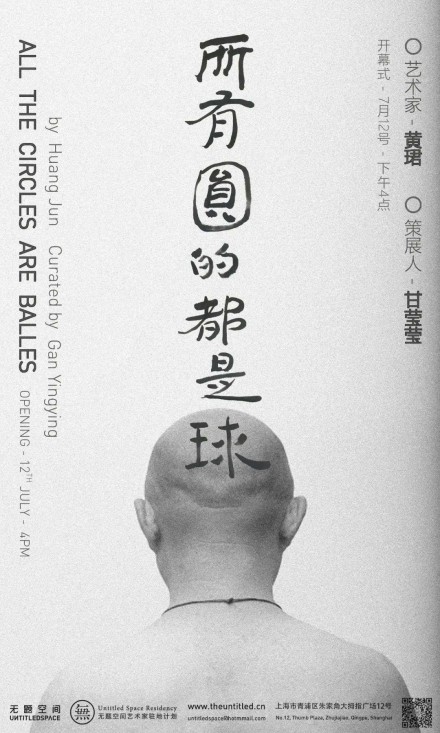
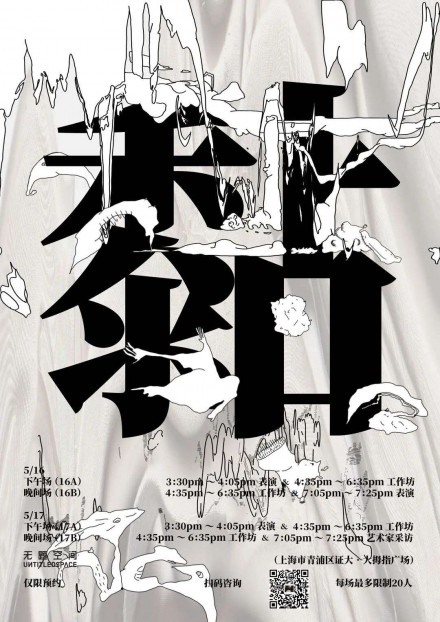
![[超]灾变论 [Hyper-]Catastrophe Theory 舜 Shun](http://www.acentricspace.com/wp-content/uploads/2024/04/wxsync-2024-04-17e42ddfe2087d093ffcdad3f414da34-440x625.jpeg)
